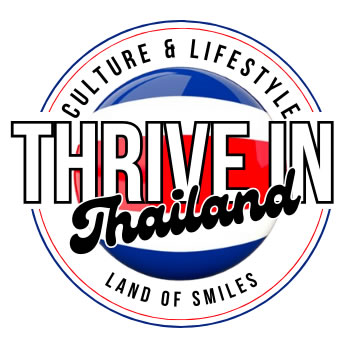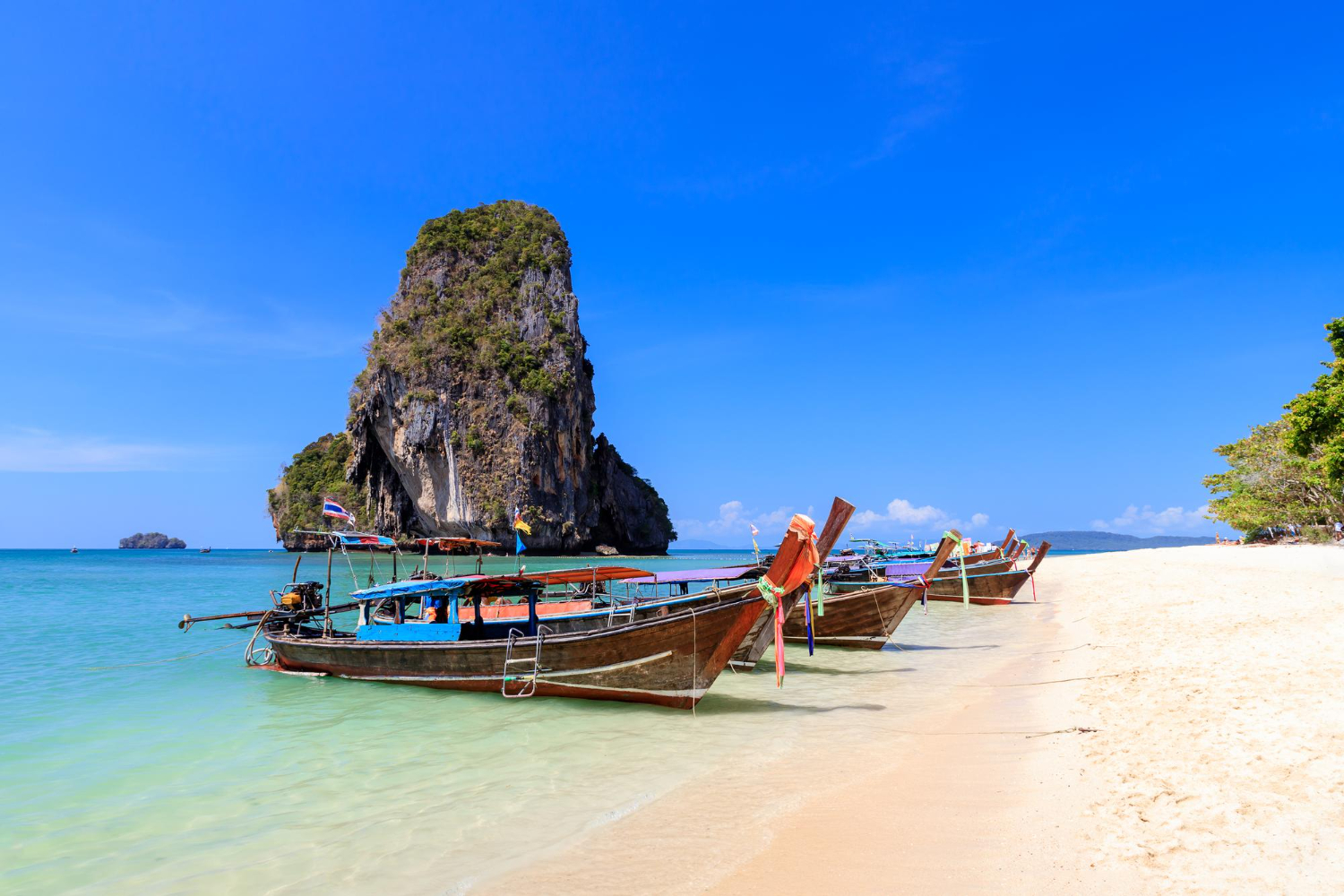From temple-topped mountains in the north to sun-soaked islands in the south, Thailand is a land of striking contrasts—and that’s exactly what makes it such a rewarding place to explore. Whether you’re drawn to golden temples, tropical beaches, buzzing cities, or peaceful countryside escapes, the Land of Smiles has something for every kind of traveler.
But with so many incredible places to choose from, planning your trip can feel overwhelming. Where do you start? What’s truly worth your time? This guide cuts through the clutter and highlights the best places to visit in Thailand for 2025—from the timeless classics like Bangkok and Chiang Mai to lesser-known towns, national parks, and remote islands you may not have heard of (yet).
Whether it’s your first visit or your fifth, use this curated list to inspire your itinerary, explore Thailand’s diversity, and discover what makes this country one of the most unforgettable destinations in Southeast Asia.
🗺️ Explore the Map
Here’s a visual guide to all the destinations featured in this article. Click the image below to open my interactive Google Map of Thailand’s best places—organized into layers by themes like temples, islands, hidden towns, and outdoor adventures.
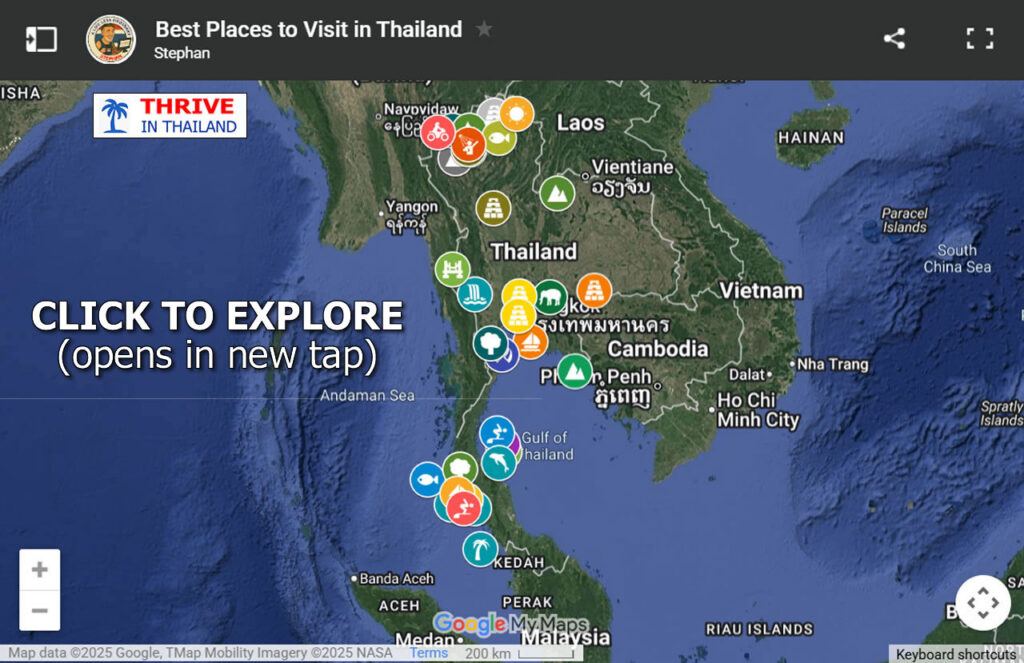
The Timeless Classics (First-Time Must-Sees)
Iconic, well-developed destinations perfect for first-time visitors exploring the best of Thailand
Some places in Thailand never go out of style—and for good reason. These are the destinations that define the country for many first-time visitors: vibrant cities, beautiful beaches, and cultural hubs with just the right mix of comfort and excitement.
From the high-energy streets of Bangkok to the relaxed charm of Chiang Mai and the tropical appeal of islands like Phuket and Ko Samui, this section highlights the tried-and-true favorites that deliver the full “wow” factor—without sacrificing ease of travel. Whether you’re here for temples, shopping, sunsets, or street food, these spots are the perfect starting point for discovering Thailand’s magic.
Let’s dive into the must-sees that every newcomer should experience at least once.
Bangkok – The City That Never Naps
Thailand’s buzzing capital is often the first stop for visitors—and it’s a wild, wonderful introduction to the country. Bangkok blends ancient temples with neon skylines, floating markets with mega malls, and humble street stalls with Michelin-rated eats. It’s chaotic, colorful, and packed with contrasts that somehow work.
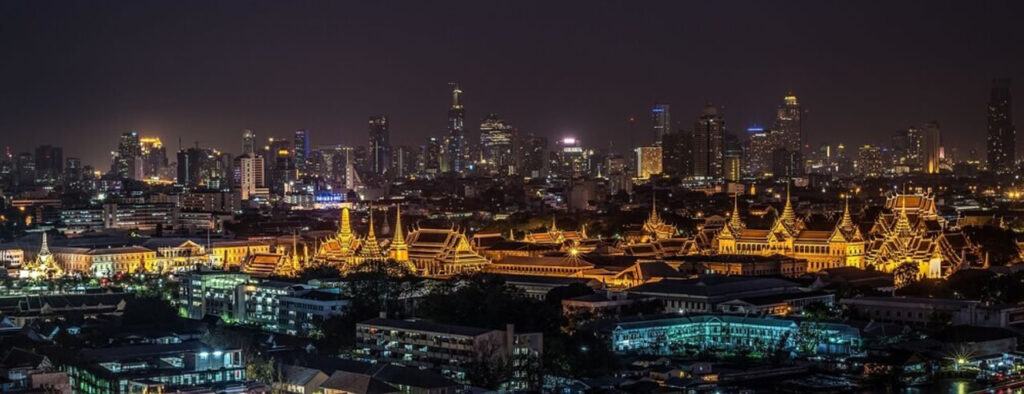
Start your cultural deep dive at the Grand Palace, then visit nearby Wat Pho to see the giant reclining Buddha. Wat Arun, just across the river, is especially striking at sunset. For a modern twist, explore the Jim Thompson House or browse the artsy lanes of Ari. When hunger strikes? Bangkok’s street food scene is legendary—whether you’re after spicy som tam, crispy pork, or a steaming bowl of boat noodles.
After dark, the city transforms again. Rooftop bars light up the skyline, night markets buzz with energy, and nightlife districts like Sukhumvit, Silom, and Khao San Road cater to every vibe—from upscale cocktails to backpacker chaos. Whether you’re sipping a drink 60 floors up or dancing until sunrise, Bangkok knows how to keep the night going.
Chiang Mai – Culture, Temples & Northern Charm
Chiang Mai offers a slower, more soulful side of Thailand. Set against a backdrop of misty mountains, this northern city blends ancient Lanna heritage with a modern, creative spirit—making it a favorite among expats, culture lovers, and return travelers alike.
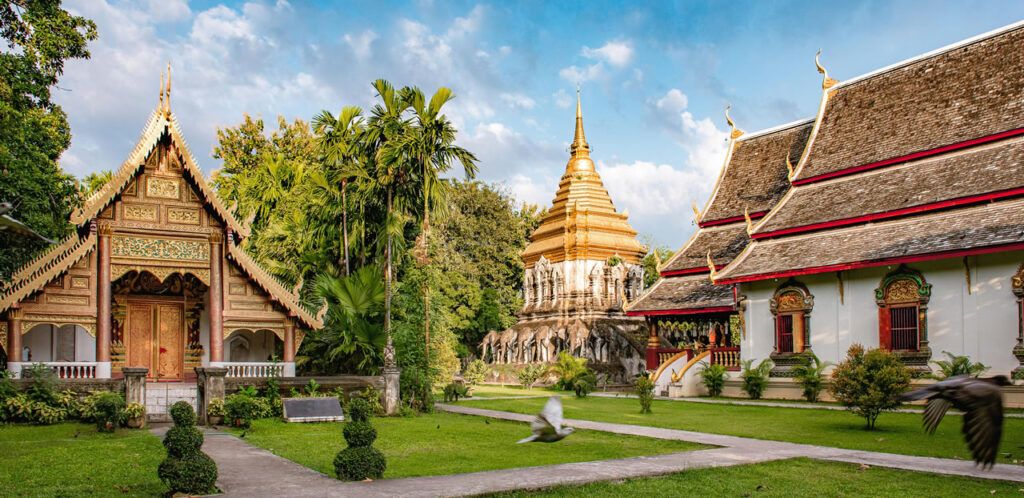
Inside the Old City walls, you’ll find centuries-old temples like Wat Phra Singh and Wat Chedi Luang, each echoing the city’s deep spiritual roots. Just outside town, Doi Suthep sits perched on a forested peak, offering sweeping views and one of the most sacred temples in the region.
When the sun sets, head to the Chiang Mai Night Bazaar or the Sunday Walking Street for street food, crafts, and lively crowds. And no trip here is complete without meeting Thailand’s national animal—the elephant. Spend a day at an ethical sanctuary like Elephant Nature Park, where rescued elephants roam freely in a peaceful mountain valley.
Phuket – Beaches, Buzz & Island Hopping
Thailand’s largest island is also one of its most versatile. Phuket draws millions of visitors each year with its postcard beaches, lively nightlife, and wide range of accommodation—from luxury resorts to budget-friendly guesthouses.

Patong Beach is Phuket’s best-known party hub, packed with energy day and night. But there’s more to the island than just neon lights. For a taste of local life, explore the colorful streets of Phuket Old Town, where restored Sino-Portuguese buildings house cafes, markets, and boutique stays. Quieter beaches like Kata, Karon, or Nai Harn offer a slower pace and soft, palm-fringed sand.
Want to get off the main island? Phuket is a perfect base for exploring the Andaman Sea. Hop on a long-tail boat or speedboat tour to visit nearby gems like the Phi Phi Islands, James Bond Island, or the coral-rich waters around Coral Island—ideal for swimming, snorkeling, or diving.
Koh Samui – Island Comfort with a Bit of Everything
Koh Samui is Thailand’s all-rounder island—offering some of Thailand’s most beautiful white-sand beaches, luxury resorts, lively nightlife, and just enough culture to keep things grounded. It’s polished but still laid-back, making it perfect for travelers who want a mix of relaxation and discovery.
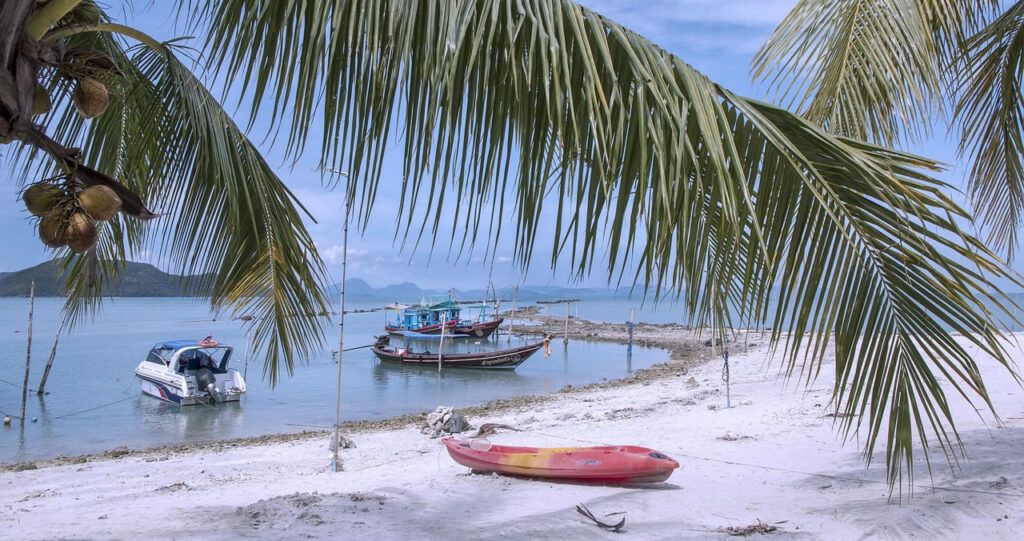
Spend your mornings lounging at Chaweng or Lamai Beach, or treat yourself to a traditional Thai massage at one of the island’s many spas. Don’t miss iconic temples like Wat Plai Laem, with its serene 18-armed statue of Guanyin, and Wat Phra Yai, home to the golden Big Buddha that has watched over the island for decades.
Koh Samui also makes a great jumping-off point for adventure. Take a speedboat to Ang Thong Marine Park, a stunning 42-island archipelago of limestone islands where you can kayak through hidden lagoons, snorkel in clear waters, or simply soak in the natural beauty.
Pattaya – Coastal Convenience Just Outside Bangkok
Pattaya might be one of Thailand’s most misunderstood destinations—but it continues to draw millions of visitors every year for good reason. Just two hours from Bangkok, this lively seaside city offers beaches, nightlife, island hopping, and an ever-evolving mix of entertainment and culture.
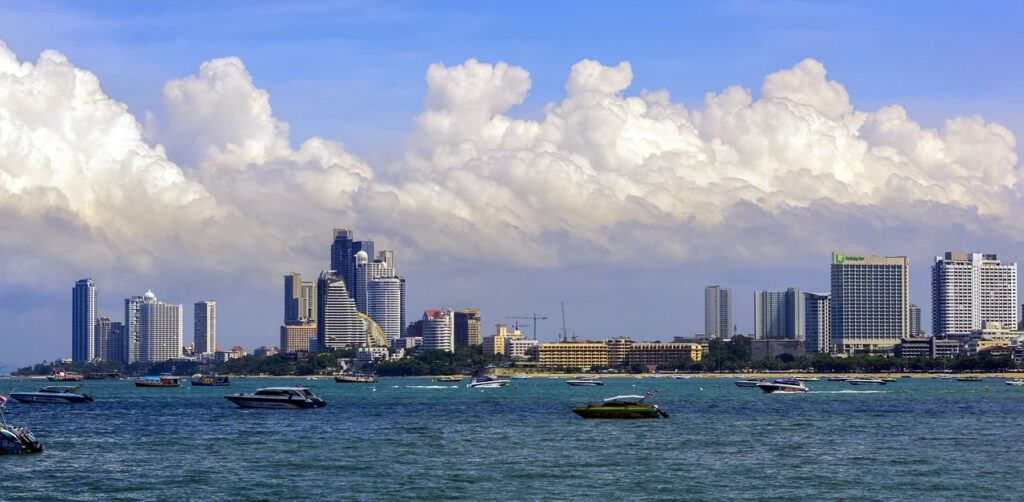
Yes, the nightlife is infamous—especially along Walking Street—but there’s more to Pattaya than its party reputation. For a quieter coastal vibe, head to Jomtien Beach, just a few minutes south, where you’ll find a more relaxed pace, beachfront restaurants, and a family-friendly atmosphere.
Families can explore attractions like Nong Nooch Tropical Garden, visit the elaborate Sanctuary of Truth, or take a ferry to Coral Island (Koh Larn) for a beach day with clear water and water sports. Pattaya also offers great value for money, with affordable hotels, international dining, golf courses, and top-notch medical tourism. Whether you’re here for the buzz or a quick seaside break, Pattaya delivers more variety than most expect.
📌 Want to plan your trip? Check out my complete Pattaya Travel Guide for beaches, nightlife, and insider tips.
Hua Hin – Laid-Back Seaside with a Royal Touch
Hua Hin offers a refreshing change of pace just a few hours south of Bangkok. Once a quiet fishing village, it became Thailand’s original beach resort when the royal family built their summer palace here—and that low-key elegance still lingers today.
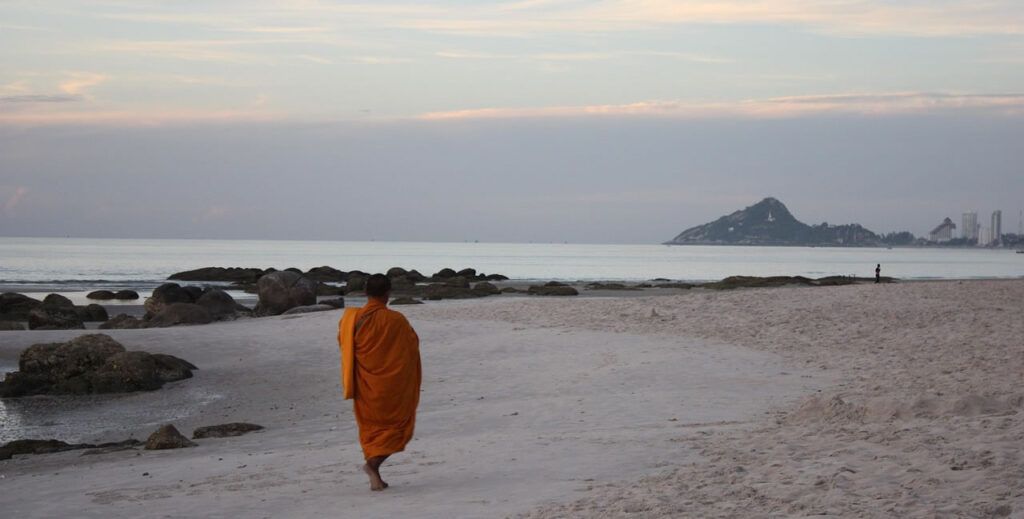
Spend your day at Hua Hin Beach, where banana boats and horse rides share space with sunbathers and kite surfers. For a view over the coastline, head up Khao Takiap hill—but be prepared to share it with the cheeky local monkeys. In the evening, explore Hua Hin Night Market, known for fresh seafood and local crafts.
Golfers will find some of Thailand’s best courses nearby, while nature lovers can take a day trip to Phraya Nakhon Cave, home to a royal pavilion bathed in natural light. Kaeng Krachan National Park, Thailand’s largest, is also close—ideal for trekking, birdwatching, or simply escaping into the jungle.
Breathtaking Islands (From Popular to Peaceful)
From party beaches to hidden retreats—these islands showcase Thailand’s coastal charm in every shade
Thailand’s islands are the stuff of travel dreams—turquoise water, soft sand, long-tail boats bobbing in the shallows, and sunsets that don’t need a filter. But beyond the well-known names like Phuket and Ko Samui lies a diverse mix of islands offering everything from diving adventures to digital detoxes.
Whether you’re after quiet beaches, coral reefs, lush jungle interiors, or a mix of laid-back and lively, these handpicked islands showcase the very best of Thailand’s coastal charm—without the heavy crowds. Each has its own personality, so choose the one that fits your style (or island-hop them all).
Let’s explore some of Thailand’s most breathtaking island escapes—from bohemian vibes to barefoot luxury.
Koh Phangan – More Than Just a Full Moon Party
Long known for its legendary Full Moon Party, Koh Phangan has quietly evolved into one of Thailand’s most versatile islands. Yes, the beach raves still draw backpackers to Haad Rin, but beyond the party zone lies a calmer, greener, and surprisingly spiritual side of the island.
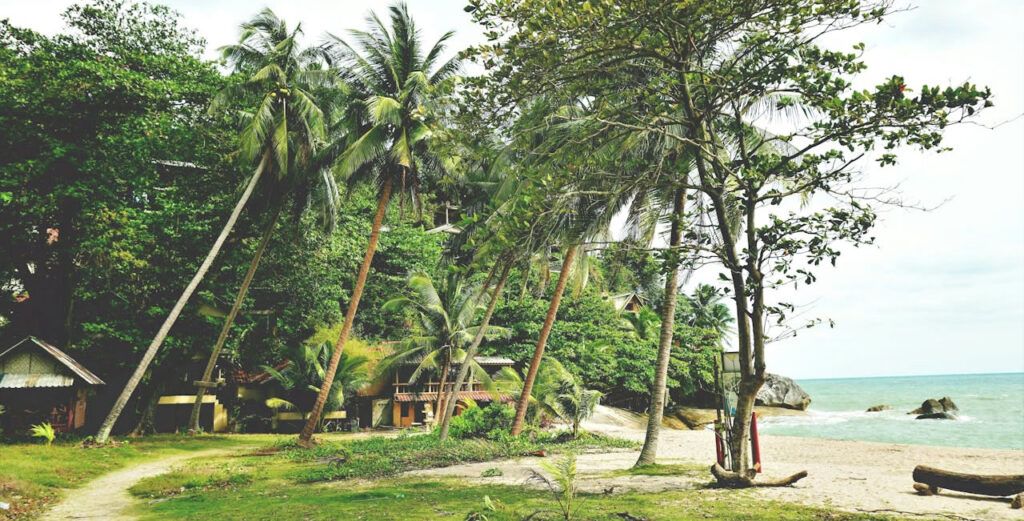
Head north and you’ll find peaceful beaches like Haad Yuan and Thong Nai Pan, where yoga retreats, eco-resorts, and coconut palms dominate the scene. Inland, hiking trails lead to waterfalls, jungle viewpoints, and quiet hillside cafes overlooking the sea.
Whether you’re here to dance all night or disconnect for a week, Koh Phangan’s split personality means you can do both—often on the same trip.
Koh Tao – Small Island, Big Underwater World
Compact, scenic, and wildly popular with divers, Koh Tao punches well above its weight. This little island in the Gulf of Thailand has become one of the world’s top spots to get scuba certified—thanks to warm waters, coral reefs, and dozens of dive schools offering affordable courses.
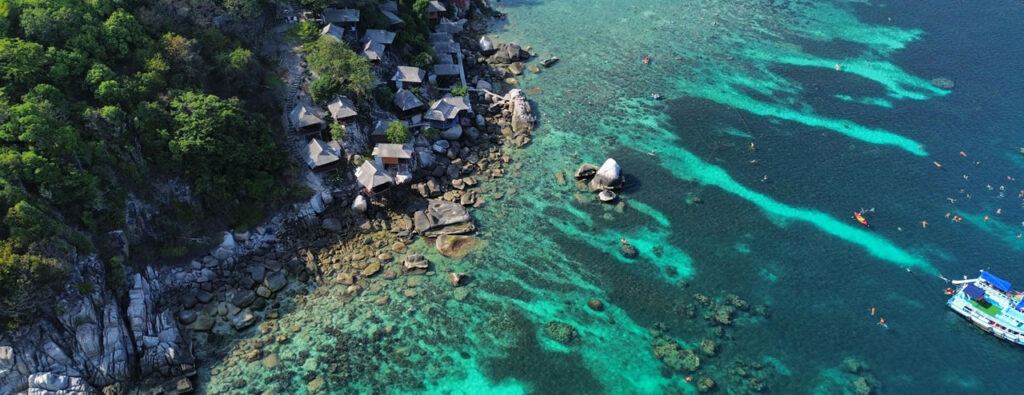
But you don’t need a tank to enjoy Koh Tao. Snorkel straight off the beach at Ao Leuk or Shark Bay, rent a kayak, or hike up to the iconic John-Suwan Viewpoint for sweeping vistas over twin bays. The island also has a mellow nightlife scene, with beach bars and fire shows that feel more intimate than rowdy.
It’s small enough to explore by motorbike in a day, but most visitors end up staying longer than planned—charmed by the island’s relaxed pace and turquoise waters.
Koh Lanta – Laid-Back and Family-Friendly
If you’re after long beaches, quiet sunsets, and a slower pace of life, Koh Lanta might be your perfect match. Tucked into Thailand’s Andaman coast, this island has all the beauty of its flashier neighbors—but with far fewer crowds.
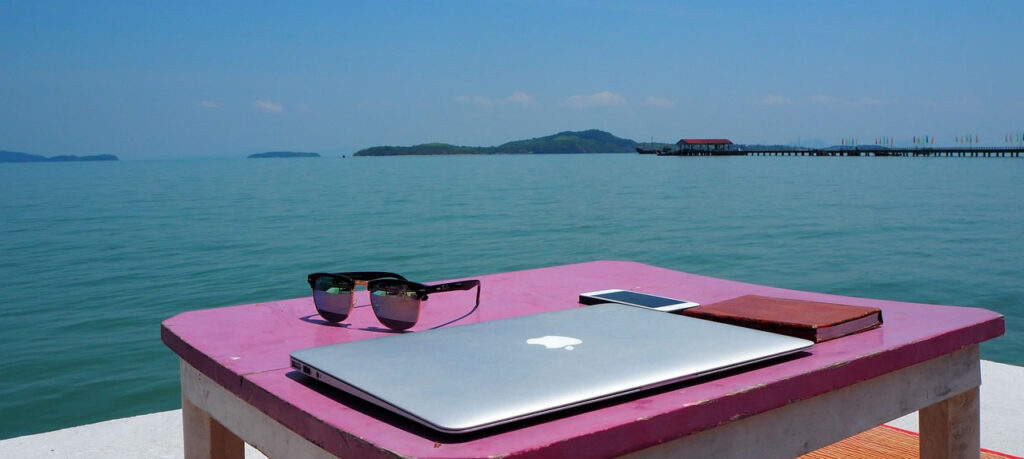
Klong Dao and Long Beach (Phra Ae) are ideal for swimming, strolling, or watching the sun dip into the sea. Inland, you’ll find lush hills, small villages, and a welcoming local vibe. The island is also a favorite for families and long-stayers, thanks to its chill atmosphere and reliable infrastructure.
Diving and snorkeling trips are easy to arrange from Lanta Old Town, or you can venture out to nearby marine parks like Koh Rok or Koh Haa for clear water and colorful reef life.
Koh Chang – Jungle Meets the Sea
Lush, mountainous, and often overlooked, Koh Chang is Thailand’s second-largest island—but still manages to fly under the radar. Located in the far east near the Cambodian border, it’s a dream for travelers seeking wild nature, fewer crowds, and a more local feel.
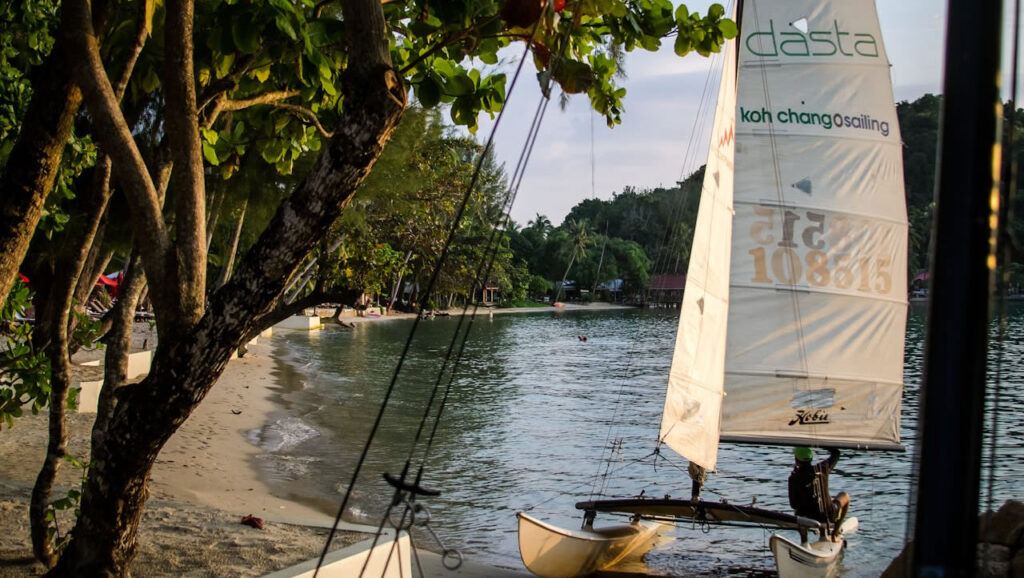
The island’s interior is a tangle of jungle, waterfalls, and hidden hiking trails, while the coastline offers a mix of lively and laid-back beaches. White Sand Beach is the busiest, with restaurants and beachfront bars, but head south to Lonely Beach or Bang Bao for a quieter, backpacker-meets-hippie vibe.
Koh Chang is also part of a protected marine park, making it a great base for kayaking, snorkeling, or hopping over to nearby islets like Koh Mak or Koh Kood.
📌 Want the full picture? Dive into my Koh Chang Travel Guide for tips on transport, beaches, and everything you need to know before you go.
Koh Lipe – Thailand’s Tiny Island Paradise
If you’re chasing powdery white sand and water so clear it feels unreal, Koh Lipe delivers in every direction. Located far in the south near the Malaysian border, this tiny island is often called the “Maldives of Thailand”—but with a more laid-back, barefoot feel.

The main stretch, Pattaya Beach, is lined with small resorts and restaurants, while Sunrise Beach and Sunset Beach offer quieter vibes and unforgettable views. It’s the perfect place to slow down: snorkel right off the shore, book a longtail boat tour to nearby islands, or simply do nothing at all.
Despite its remote location, Koh Lipe has just enough infrastructure to feel comfortable—without losing its off-grid charm.
📌 Thinking of visiting? Check out my Koh Lipe Travel Guide for tips on getting there, the best beaches, top resorts, and everything you need to plan your trip.
Nature & National Parks (Wild Beauty)
Lush jungles, dramatic waterfalls, and highland escapes for nature lovers and outdoor adventurers
From mist-covered mountains to crystal-clear marine sanctuaries, Thailand’s national parks are as diverse as they are breathtaking. Whether you’re hiking to hidden waterfalls, trekking through rainforest, or snorkeling alongside sea turtles, these protected areas showcase the country’s wild side at its very best.
This section features six standout parks—from jungle interiors to underwater wonderlands—each offering a unique way to explore Thailand beyond the beaches and cities.
Khao Yai National Park – Thailand’s Wild Heartland
As Thailand’s first and one of its most iconic national parks, Khao Yai offers a glimpse into the country’s wilder side—just a few hours northeast of Bangkok. Spanning over 2,000 square kilometers, this UNESCO-listed park is home to dense forests, waterfalls, wildlife, and a refreshingly cool climate.
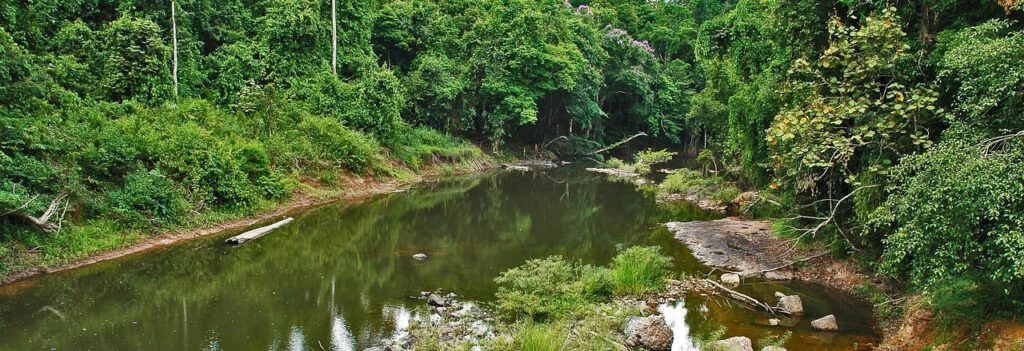
Keep your eyes open for wild elephants, gibbons, hornbills, and even the occasional bear. Hike to the famous Haew Narok Waterfall, explore jungle trails, or simply take in the views from scenic mountain roads. The park also offers guided night safaris and birdwatching tours for those looking to dive deeper into its biodiversity.
For film buffs, Khao Yai is also known as the backdrop for scenes in The Beach, and its surroundings now house boutique hotels, wineries, and cafes—making it one of the most accessible wilderness escapes in Thailand.
📌 Thinking of exploring Thailand’s wild side? Don’t miss my Khao Yai National Park Travel Guide for top waterfalls, wildlife encounters, where to stay, and everything you need to plan your trip.
Similan Islands – Thailand’s Underwater Wonderland
For marine life lovers and underwater explorers, Similan Islands National Marine Park is as close to paradise as it gets. Located off the coast of Phang Nga in the Andaman Sea, this protected archipelago is famous for its crystal-clear waters, dramatic granite boulders, and vibrant coral reefs teeming with sea turtles, manta rays, and reef sharks.
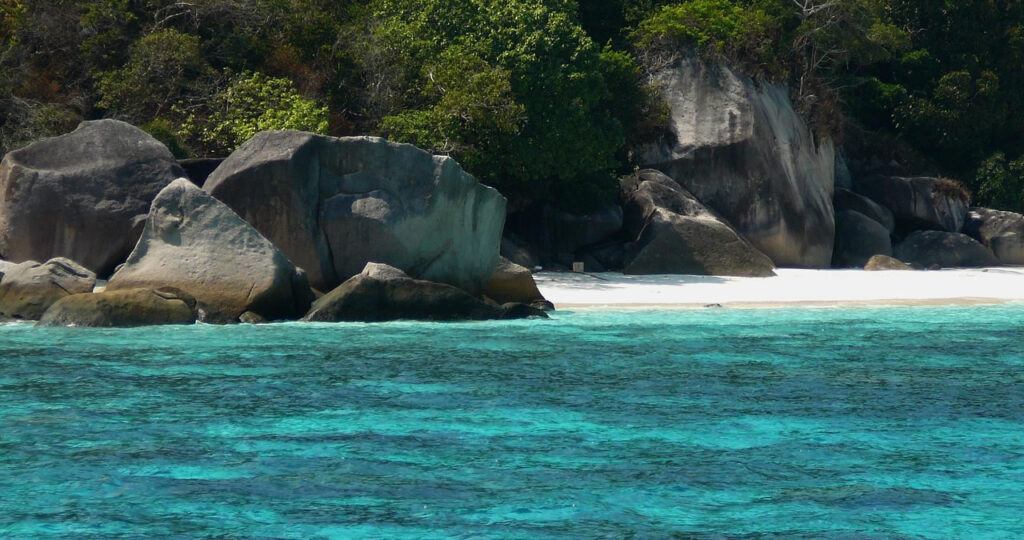
Made up of 11 islands, the Similans are only open to visitors from mid-October to mid-May to protect their fragile ecosystem. Day trips are available from Khao Lak and Phuket, with speedboats bringing travelers to dive, snorkel, or relax on perfect beaches like Donald Duck Bay on Koh Similan.
Strict visitor limits and no overnight stays on the islands themselves help preserve their pristine condition—making it one of the most stunning but responsibly managed marine parks in Southeast Asia.
📌 Dreaming of turquoise waters and world-class diving? Before you go, grab my Similan Islands Travel Guide for how to get there, the best dive spots, top beaches, and everything you need to plan your trip.
Doi Inthanon – Where Mountains Meet the Sky
Home to the highest peak in Thailand, Doi Inthanon National Park is a must for anyone exploring the north. Just 90 minutes from Chiang Mai, the park offers a striking mix of cool mountain air, dense forests, waterfalls, and royal monuments—often wrapped in an early morning mist that feels almost otherworldly.
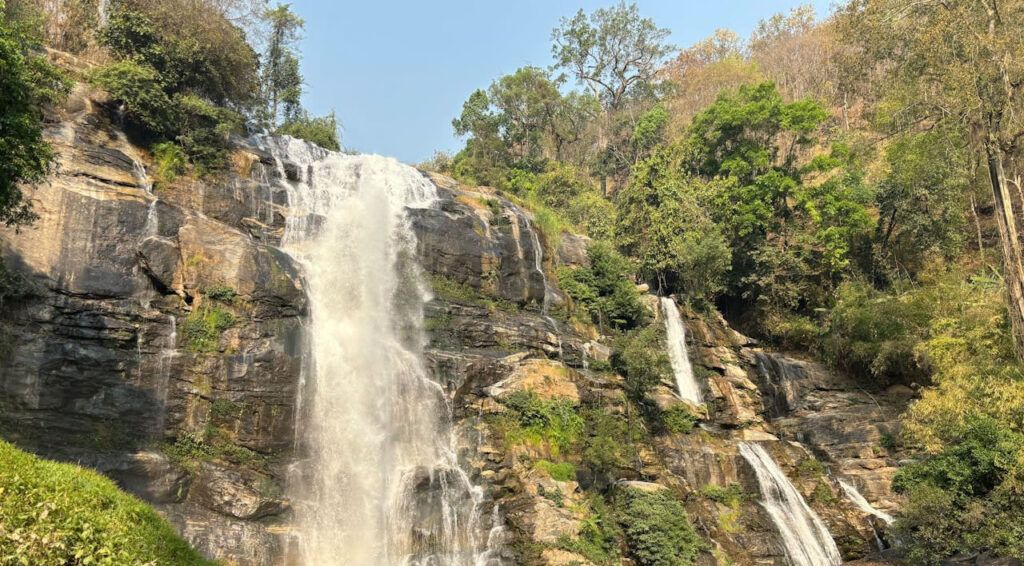
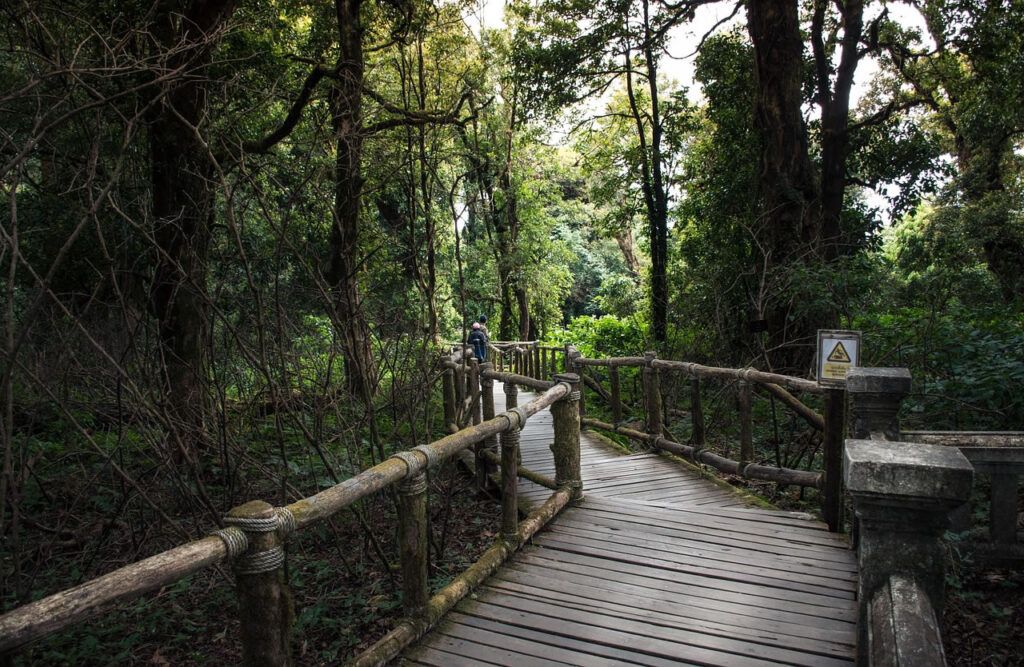
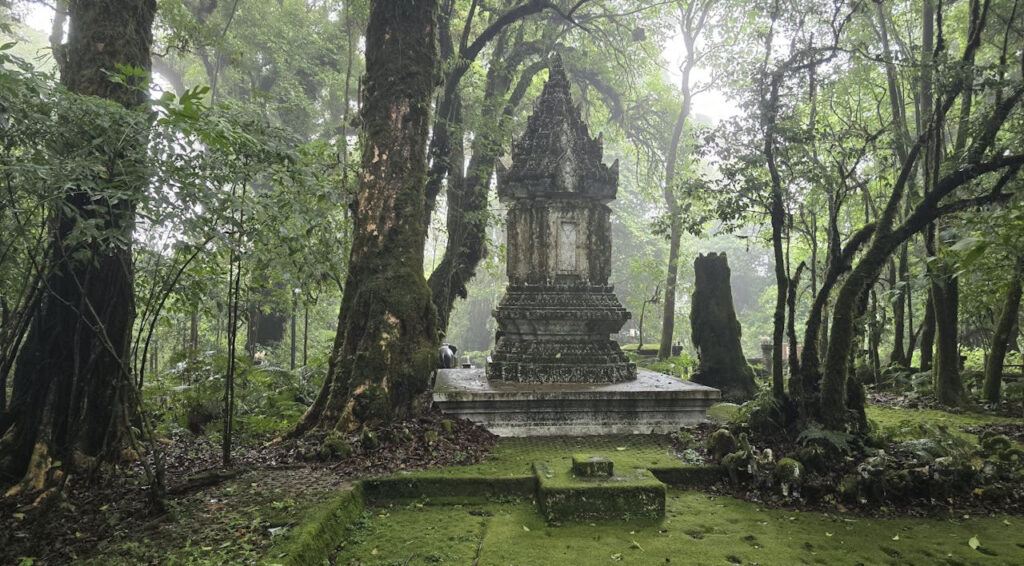
Don’t miss the twin King and Queen pagodas, perched high with panoramic views across the surrounding valleys. On the way up, you’ll pass Wachirathan Waterfall, cloud forests full of rare birds, and scenic hill tribe villages—many of which grow coffee and handicrafts you can support directly.
Doi Inthanon is a refreshing break from the heat and pace of the lowlands, offering a literal and figurative breath of fresh air.
📌 Want to stand on the Roof of Thailand? Get the essentials in my Doi Inthanon National Park Guide for travel tips, top trails, waterfalls, where to stay, and everything you need to plan your visit.
Erawan National Park – The Seven-Tier Waterfall Dream
Just a few hours from Bangkok in Kanchanaburi Province, Erawan National Park is best known for its stunning seven-tiered waterfall—a natural staircase of turquoise pools tucked into a lush jungle setting. It’s one of Thailand’s most photogenic and popular national parks, and for good reason.

Each level of Erawan Falls has its own charm—some are perfect for swimming, others for quiet reflection. The hike to the top is about 1.5 kilometers and gets steeper with each tier, but the views (and cool water dips) make it more than worthwhile. Along the way, you might spot monkeys, monitor lizards, or even the rare blue mahseer fish.
Beyond the falls, the park also offers caves, light jungle trails, and a refreshing break from the city heat.
Khao Sok – Rainforest, Limestone Cliffs & Floating Bungalows
Tucked between Phuket, Krabi, and Surat Thani, Khao Sok National Park is one of Thailand’s most visually striking natural areas—home to one of the oldest rainforests on Earth. Towering limestone karsts rise out of Cheow Lan Lake, forming surreal, jungle-covered cliffs that look like something out of Jurassic Park.

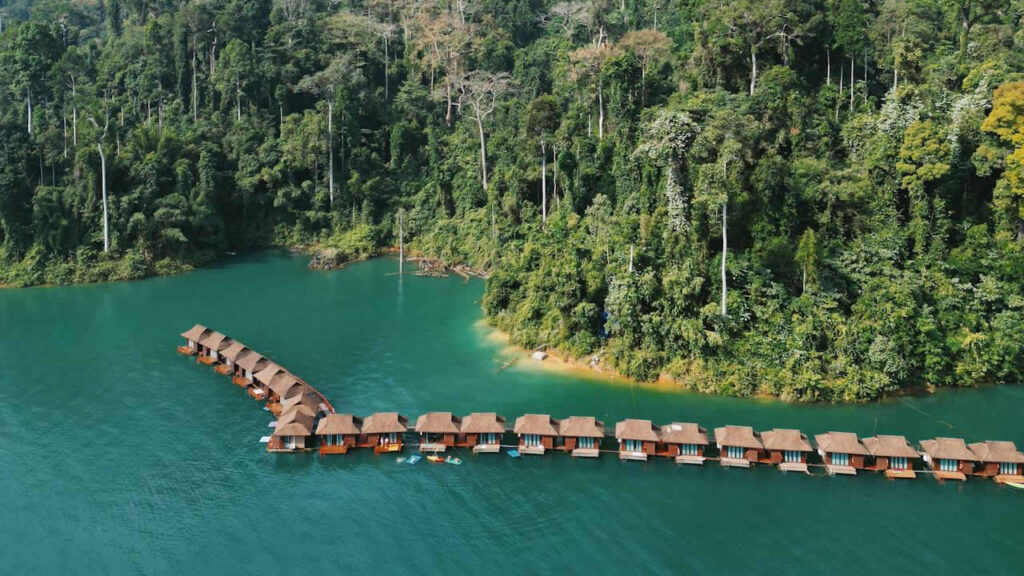
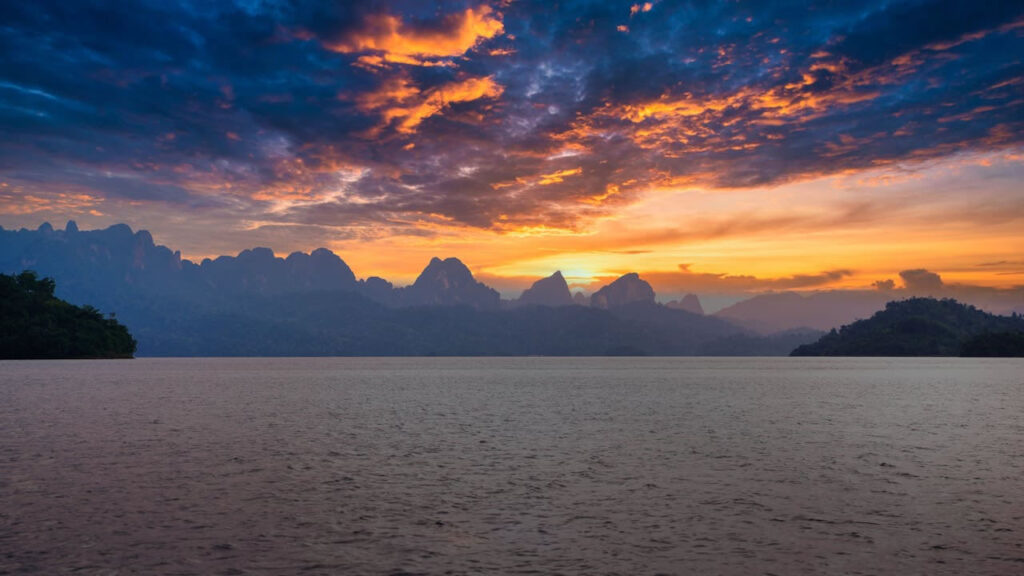
Visitors can kayak through misty gorges, trek to hidden waterfalls, or stay overnight in a floating bungalow, falling asleep to the sounds of gibbons and cicadas. The park is also rich in wildlife, with wild elephants, hornbills, and even elusive leopards still roaming its dense interior.
Khao Sok is less polished than other destinations—but that’s exactly what makes it special.
Kaeng Krachan – Thailand’s Largest & Least-Touched Park
Sprawling across the border of Phetchaburi and Prachuap Khiri Khan provinces, Kaeng Krachan National Park is Thailand’s largest protected area—and one of its quietest. It’s a haven for wildlife, misty mountain views, and raw, untouched nature that feels worlds away from the tourist trail.
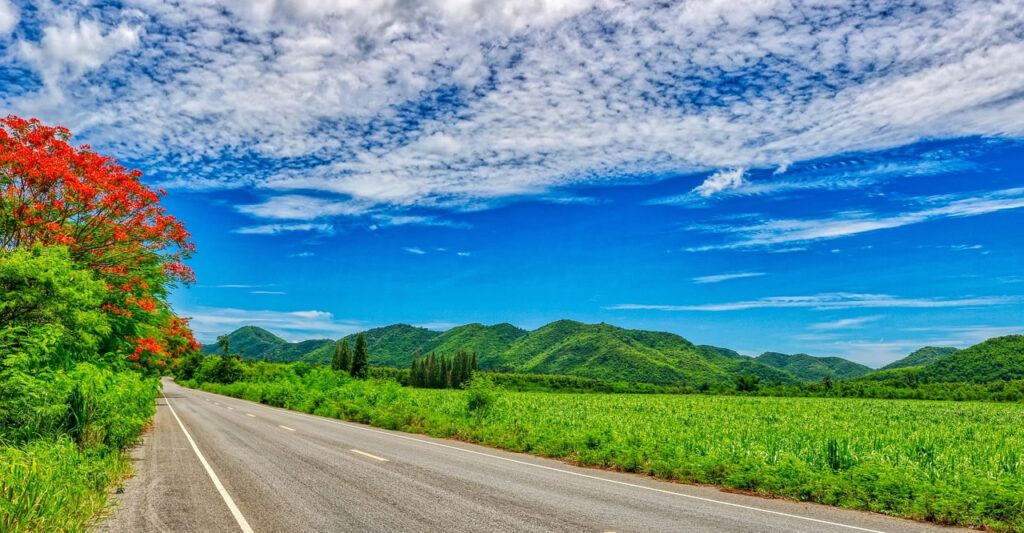
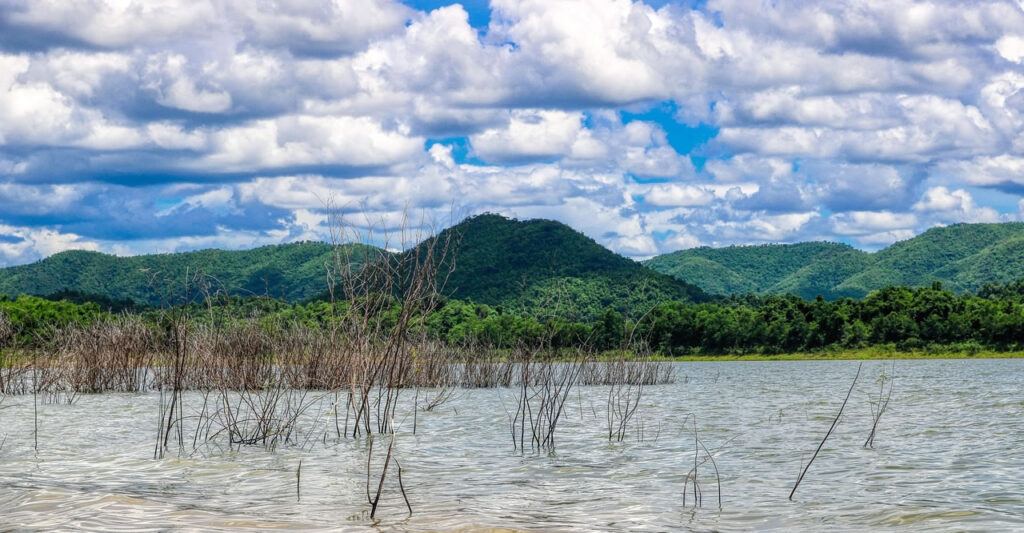
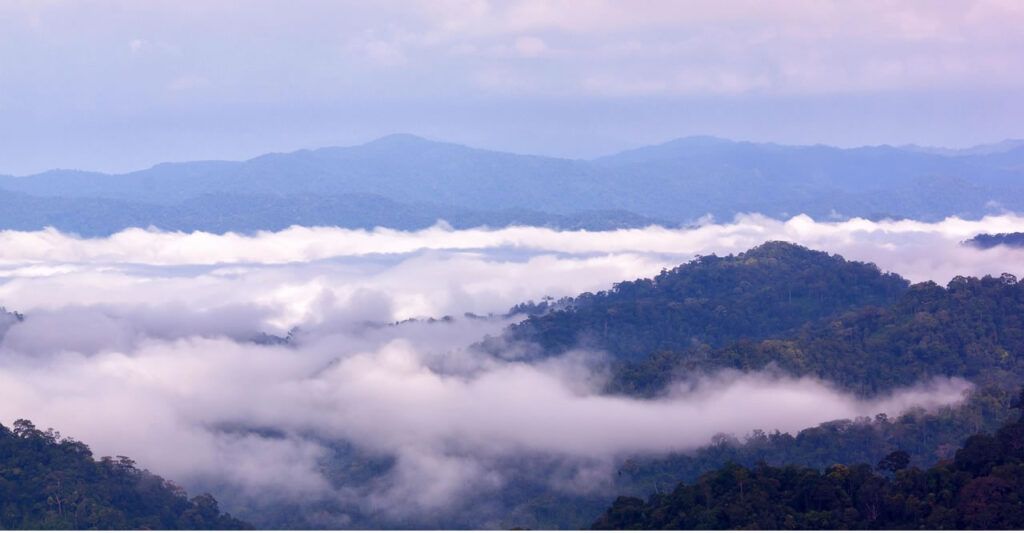
The park is part of a UNESCO World Heritage Site and is home to over 400 bird species, wild elephants, clouded leopards, and even elusive sun bears. Popular spots include Panoen Thung Viewpoint, where sea mist rolls over the forest canopy at dawn, and Thor Thip Waterfall, which is reached via a peaceful forest hike.
Despite its size and biodiversity, Kaeng Krachan remains surprisingly under-visited, making it perfect for travelers seeking serenity and immersion in the wild.
Cultural & Spiritual Gems (Temples, Ruins & Traditions)
Step into Thailand’s rich heritage with ancient capitals, sacred temples, and timeless traditions
Thailand’s spiritual heart beats in golden stupas, ancient ruins, and sacred mountaintop temples. Whether you’re wandering through the crumbling splendor of former capitals or witnessing monks chanting at sunrise, these places offer more than just photo ops—they invite quiet reflection and cultural insight. This carefully curated list highlights Thailand’s most iconic, moving, and architecturally stunning spiritual sites.
Ayutthaya Historical Park
Once the capital of the Kingdom of Siam, Ayutthaya was one of the world’s largest and wealthiest cities in the 17th century. Today, its UNESCO-listed ruins offer a hauntingly beautiful glimpse into the past. Crumbling chedis, headless Buddha statues, and temple spires rising from overgrown courtyards make for a surreal landscape steeped in history.
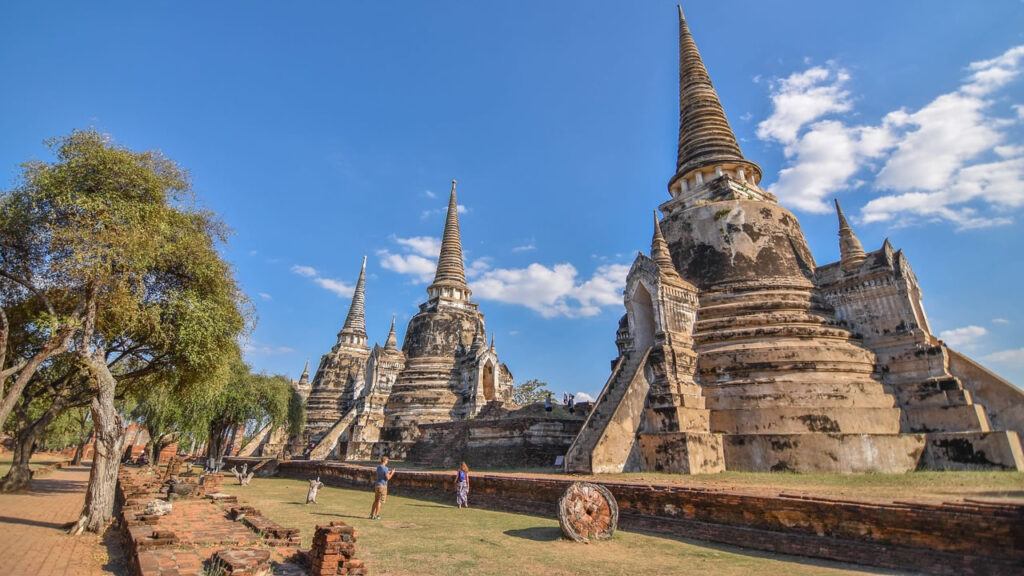
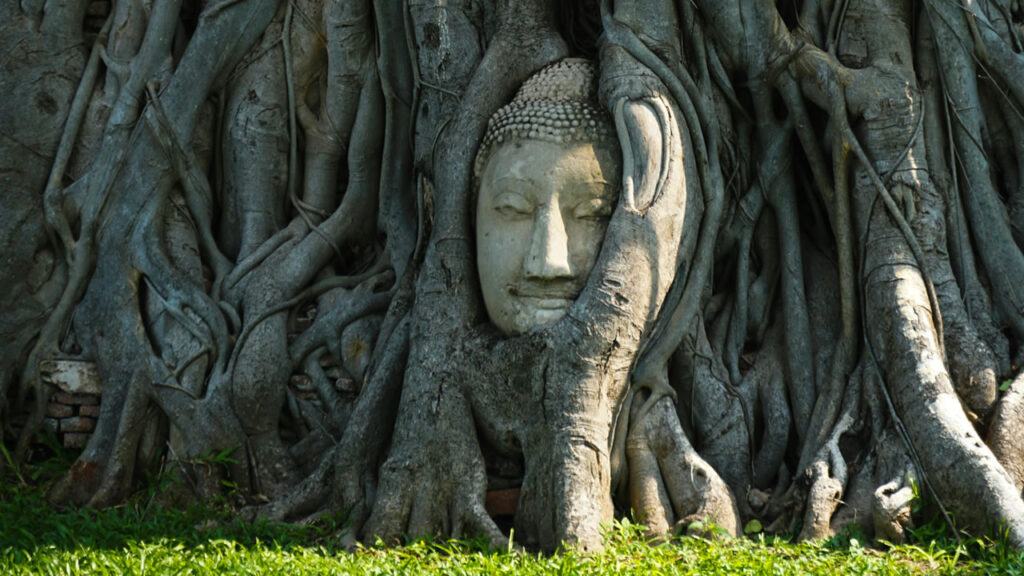
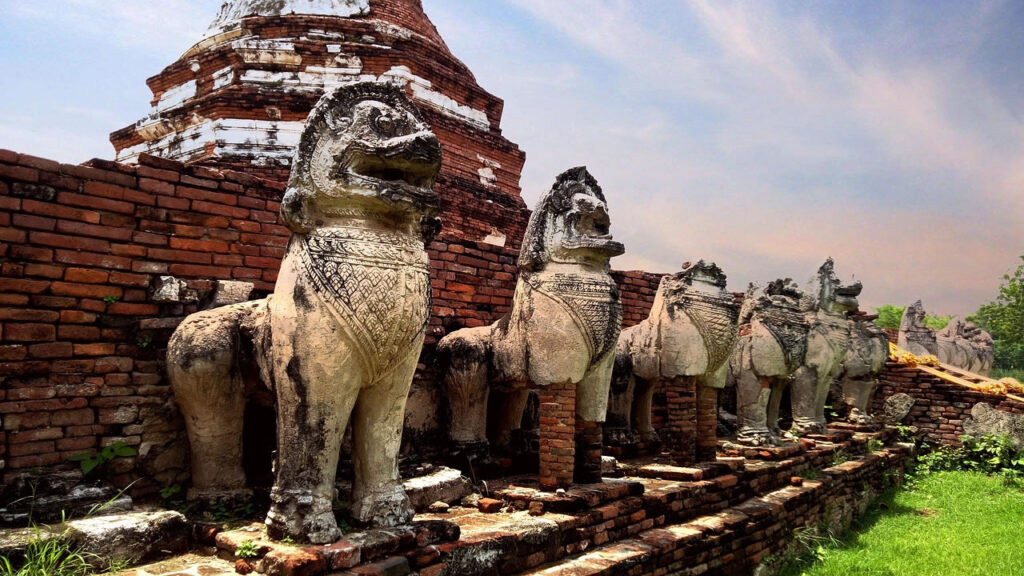
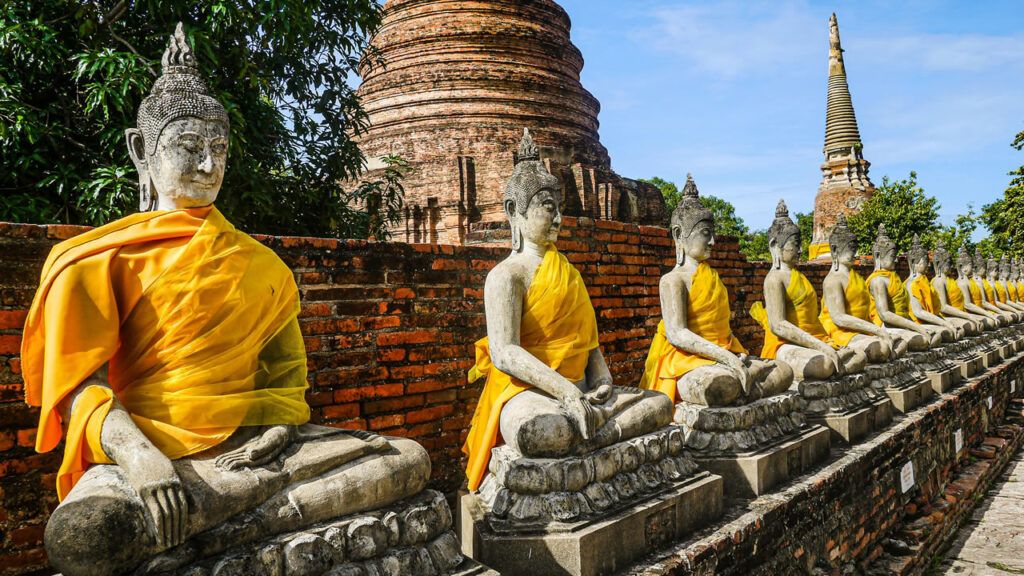
Don’t miss Wat Mahathat, where a Buddha head rests mysteriously in the roots of a Bodhi tree. Just an hour from Bangkok, Ayutthaya makes for a powerful day trip—or a deeper dive into Thailand’s royal heritage.
📌 Want to explore further? Here’s my detailed Ayutthaya Travel Guide covering transport, temples, and insider advice.
Sukhothai Historical Park
Sukhothai—meaning “Dawn of Happiness”—was the first capital of Siam and the cradle of Thai civilization. Walking or cycling through its tranquil historical park, you’ll find well-preserved temples, lotus-studded ponds, and elegant Buddha statues that reflect the graceful art of the 13th and 14th centuries.
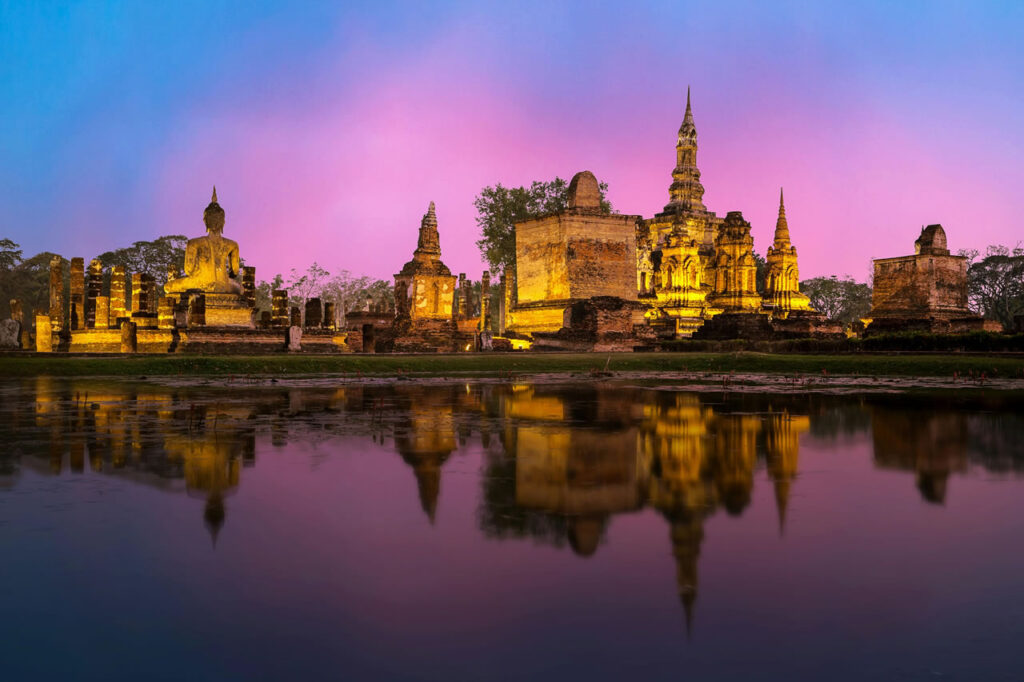
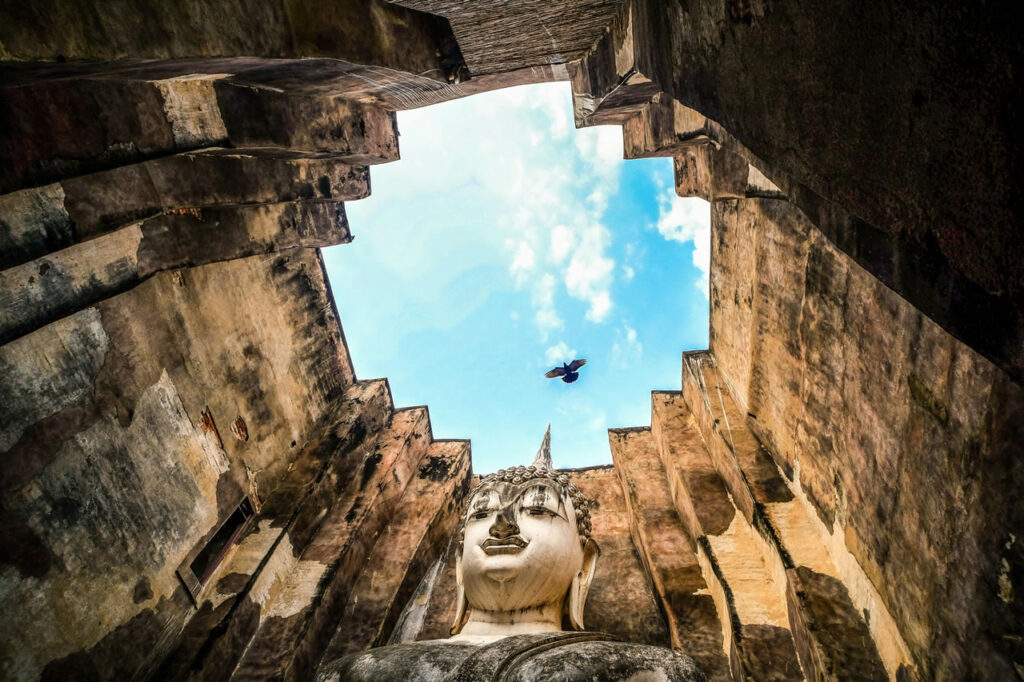
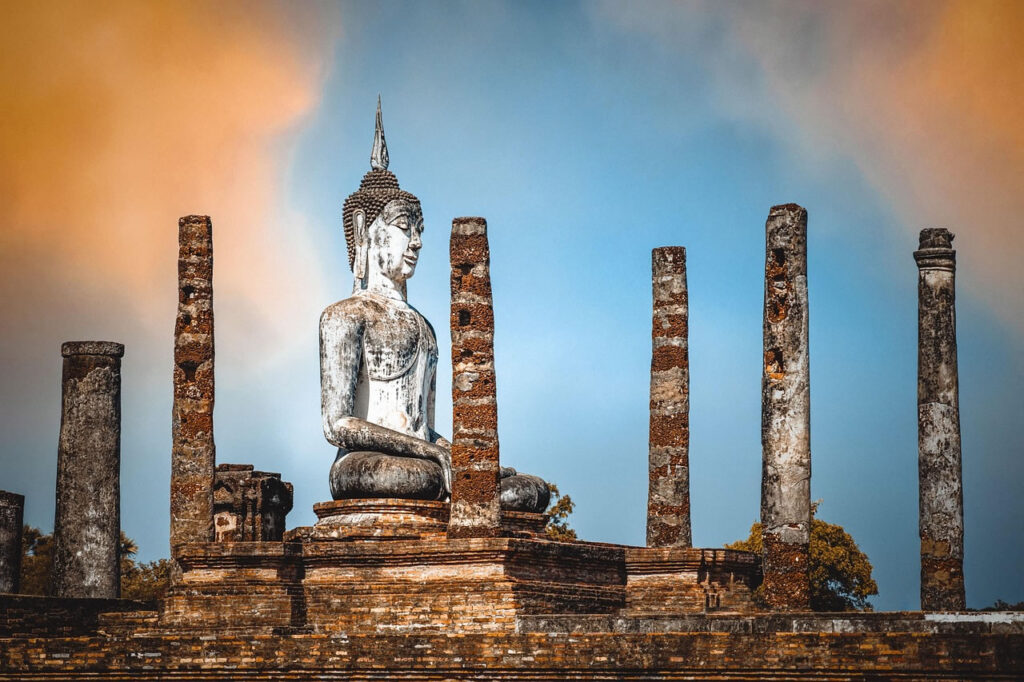
The park is divided into zones, with Wat Mahathat at its center, framed by graceful columns and reflective pools. Less crowded than Ayutthaya, Sukhothai offers a peaceful and introspective look into Thailand’s spiritual and political beginnings.
📌 Planning to visit? Check out my Sukhothai Travel Guide for details on how to get there, the best times to explore, where to stay, and insider tips for making the most of your trip.
Wat Pho, Bangkok
Home to the majestic Reclining Buddha, Wat Pho is one of Bangkok’s oldest and most revered temples. The 46-meter-long golden statue represents the Buddha at peace before entering nirvana—its massive feet inlaid with intricate mother-of-pearl designs.
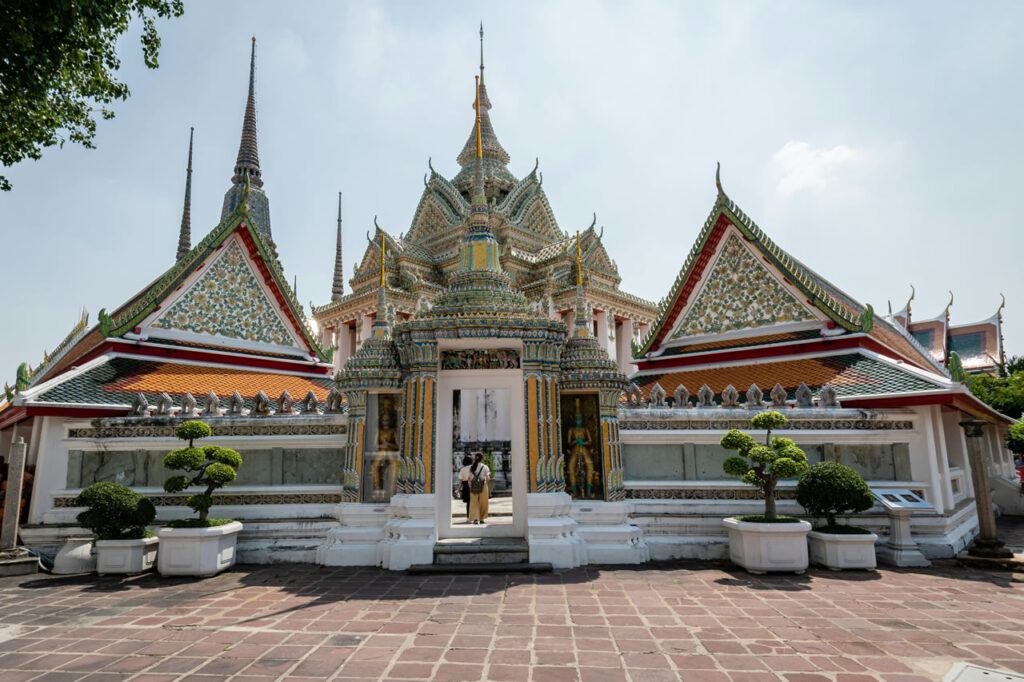
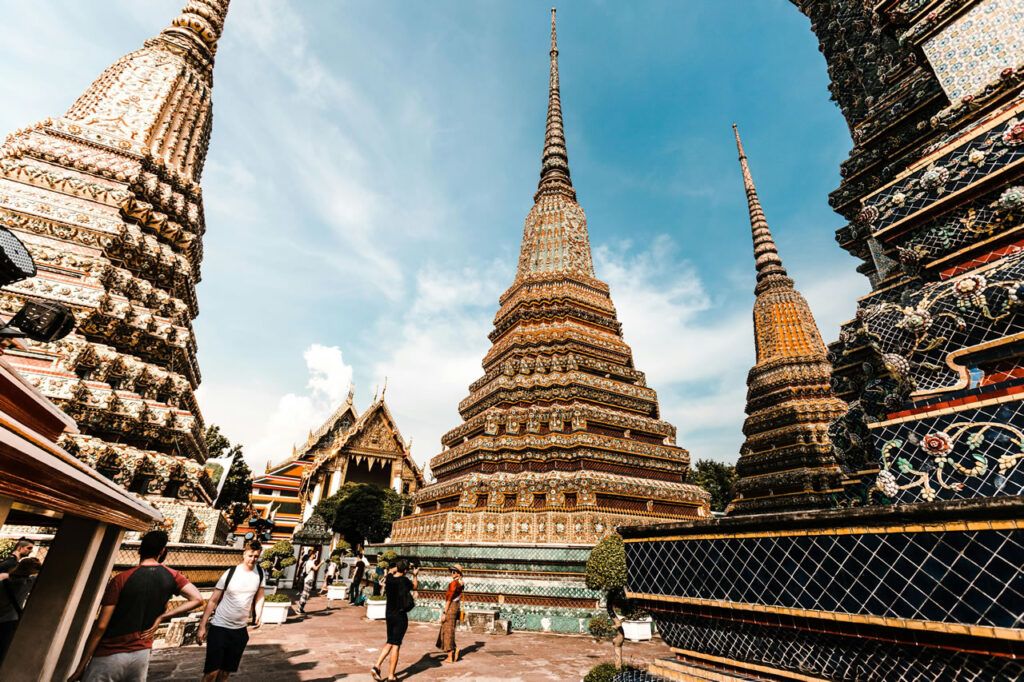
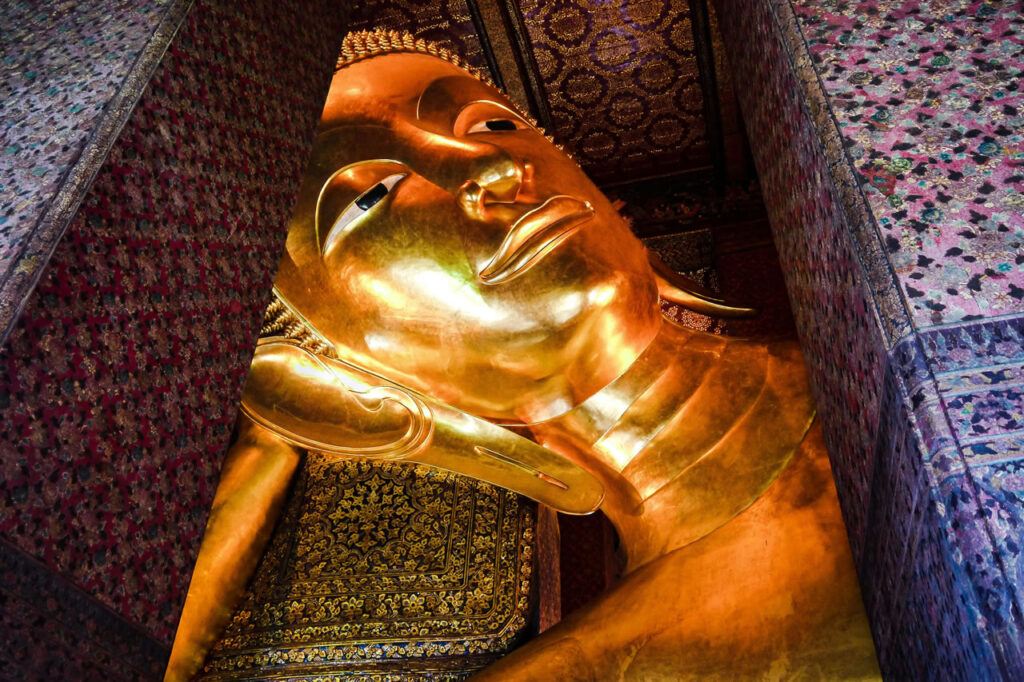
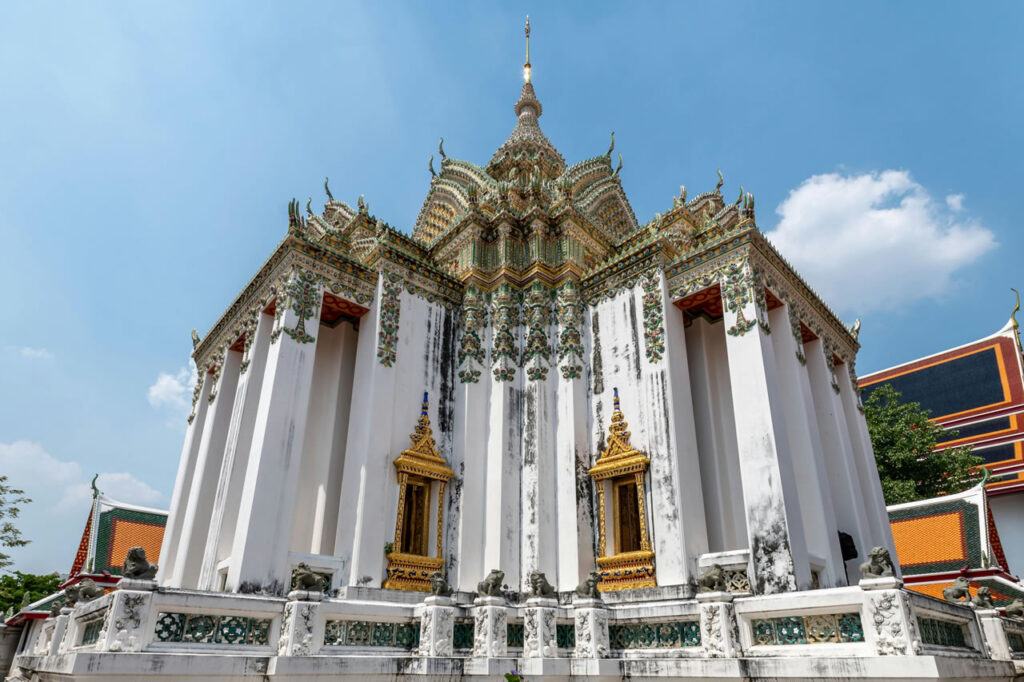
But Wat Pho is more than a photo spot. It’s also the birthplace of traditional Thai massage, with an active school on-site where treatments are still taught and practiced. Despite its central location near the Grand Palace, the temple grounds feel surprisingly serene, offering a quiet moment of reflection in the heart of the capital.
White Temple (Wat Rong Khun), Chiang Rai
Unlike any temple you’ve seen before, Wat Rong Khun—known as the White Temple—is a surreal blend of Buddhist symbolism and contemporary Thai art. Designed by visionary artist Chalermchai Kositpipat, this all-white structure sparkles with mirrored mosaics and intricate sculptures.
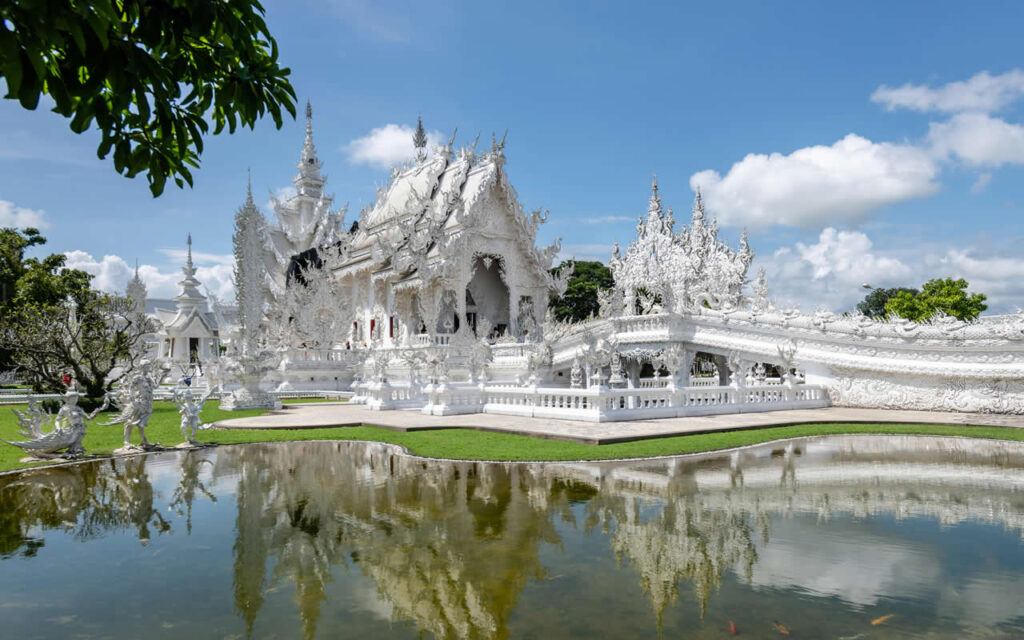
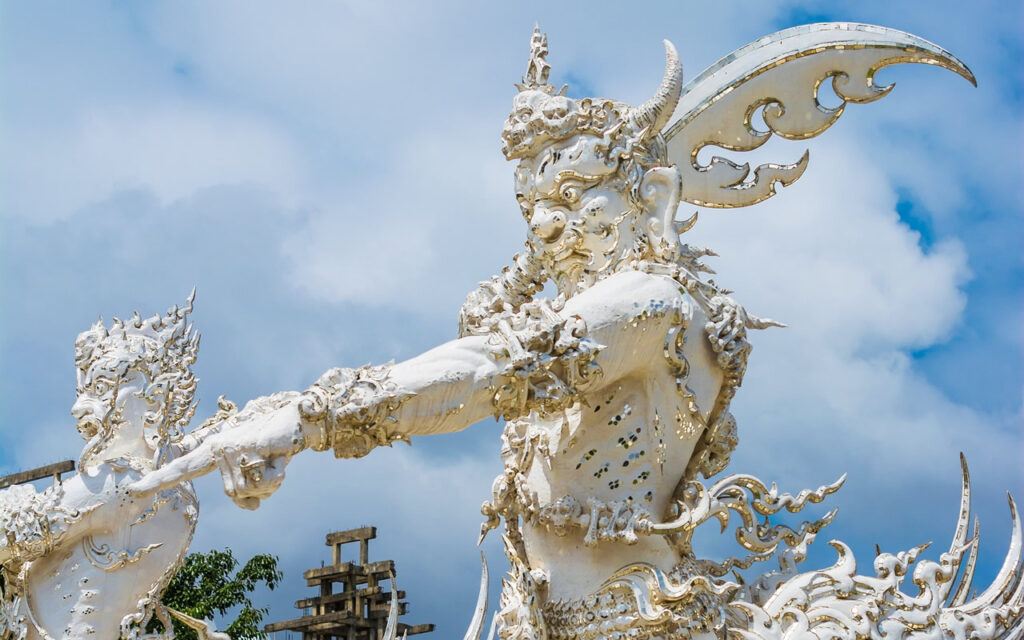
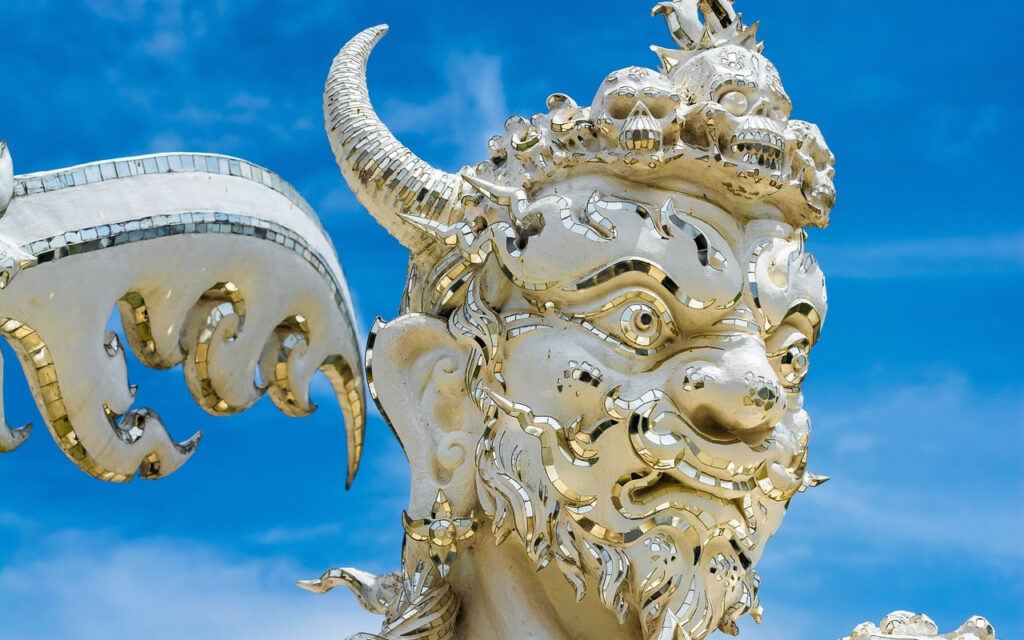
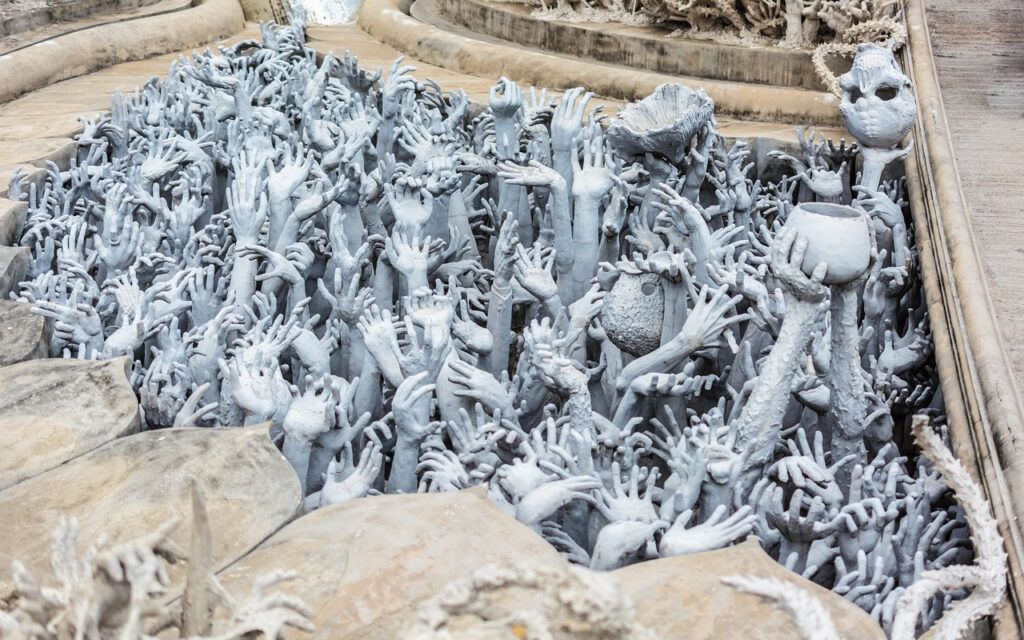
Cross a bridge over a sea of reaching hands (representing desire) to enter the main hall, where traditional murals coexist with pop culture cameos like Neo from The Matrix or Hello Kitty. It’s a deeply symbolic place that challenges expectations while preserving spiritual depth—a must-visit for those seeking the unexpected.
📌 The White Temple is just one highlight—don’t miss my detailed Chiang Rai Travel Guide, covering must-see sights, local life, and how to get there.
Wat Phra That Doi Suthep, Chiang Mai
Perched high on Doi Suthep mountain, this sacred temple overlooks Chiang Mai with sweeping views and spiritual gravitas. Founded in the 14th century, Wat Phra That Doi Suthep is said to house a relic of the Buddha himself.
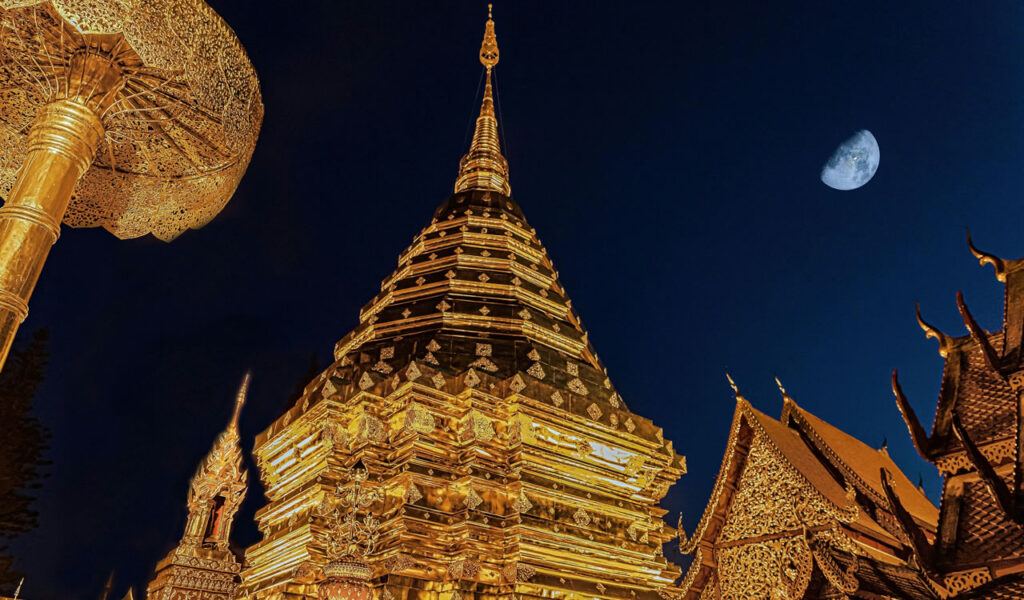
The golden chedi at its center gleams in the sunlight, drawing pilgrims and visitors alike. The temple is reached by climbing a staircase flanked by naga (serpent) statues—or via a cable car if you’re saving your energy. Early mornings are especially serene, with the sound of monks chanting echoing through the crisp mountain air.
Phanom Rung Historical Park
Set on the rim of an extinct volcano in northeastern Thailand, Phanom Rung is a striking Khmer temple complex that rivals even Cambodia’s Angkor Wat in beauty. Built between the 10th and 13th centuries, it was dedicated to the Hindu god Shiva and showcases exquisite lintels, carvings, and sandstone structures.
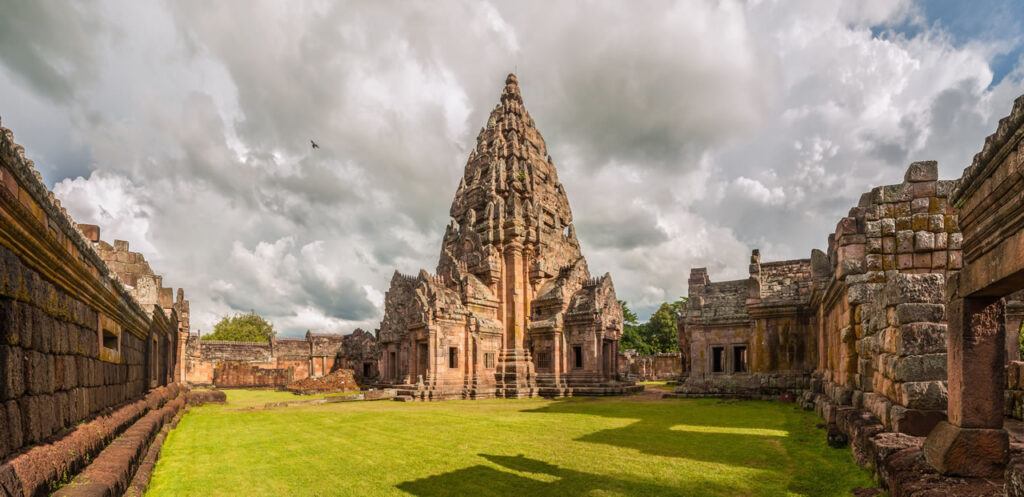
The temple’s long processional walkway and dramatic staircases create a powerful sense of arrival. Visit during the annual sunrise alignment, when the sun shines straight through all 15 doorways, and you’ll understand why Phanom Rung is one of Thailand’s most underrated spiritual treasures.
Charming Towns & Offbeat Escapes
Quiet getaways and lesser-known spots offering authentic experiences and relaxed local vibes
Beyond the well-trodden tourist routes, Thailand has no shortage of smaller towns and quiet corners that offer a different kind of experience. These destinations may not make every guidebook’s front page, but for those who prefer slower travel, cultural depth, or simply fewer crowds, they’re well worth a closer look.
From mist-covered mountain villages in the north to peaceful coastal towns in the south, these places reflect a more local pace of life—often with a strong sense of community and natural surroundings that feel untouched by mass tourism. They may not offer five-star resorts, but what you’ll find instead is authenticity, calm, and often a few unexpected discoveries.
Pai – Mountain Retreat with a Bohemian Soul
Nestled in the misty hills of Mae Hong Son province, Pai is a small mountain town that’s earned cult status among backpackers, creatives, and anyone looking to unwind in northern Thailand. About three hours from Chiang Mai along a famously twisty road, Pai offers cool air, stunning scenery, and a laid-back vibe that’s easy to fall in love with.

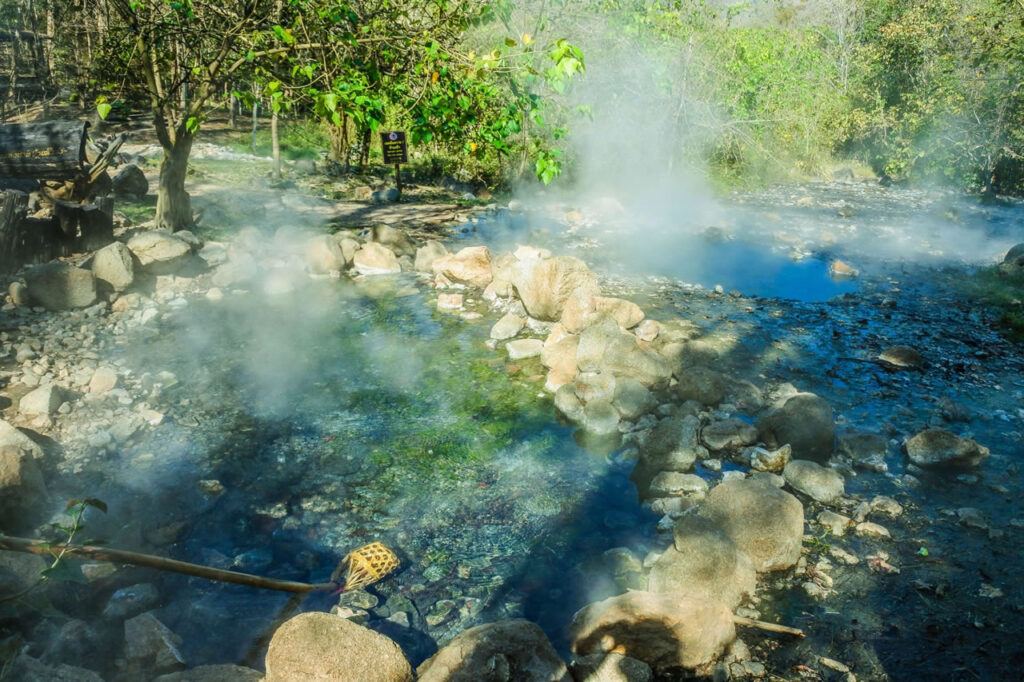
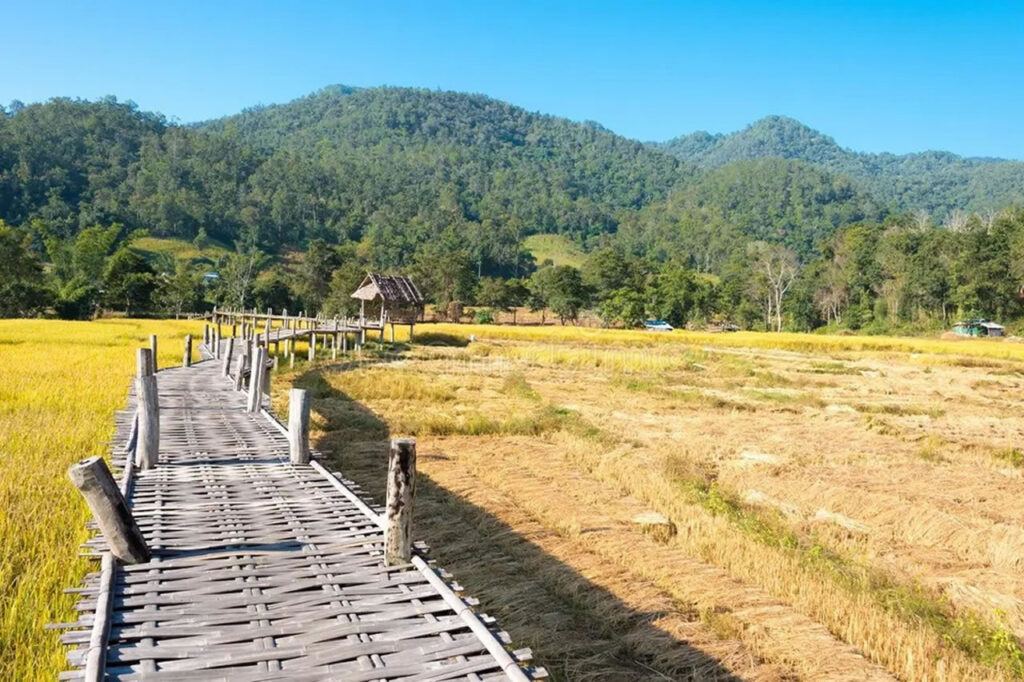
What was once a quiet village has grown into a quirky travel hub, with riverside bungalows, colorful street art, vegan cafés, and nightly walking streets. But beyond the town’s easy charm, you’ll find hot springs, waterfalls, and breathtaking lookouts like Yun Lai and Pai Canyon—perfect for sunrise or sunset escapes.
Pai is best enjoyed slowly. Rent a scooter, explore hidden valleys, soak in the Tha Pai Hot Springs, or simply relax in a hammock with a mountain view. It’s not the place for rushing—and that’s exactly the point.
Chiang Dao – Misty Peaks and Peaceful Caves
Just 90 minutes north of Chiang Mai, Chiang Dao feels like another world. This quiet mountain town sits beneath Doi Luang Chiang Dao, Thailand’s third-highest peak, and offers a serene escape surrounded by lush jungle, limestone cliffs, and cool northern air.

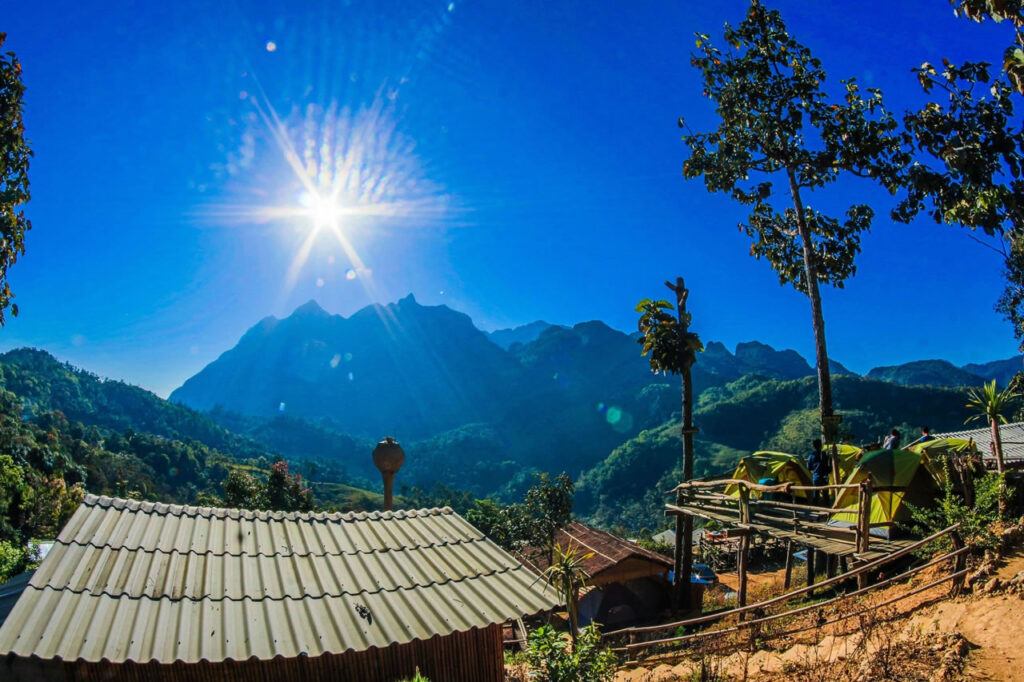
The town itself is low-key—no nightlife, no rush—just a scattering of guesthouses, local eateries, and rice fields framed by towering mountains. The highlight here is the Chiang Dao Cave complex, a fascinating network of illuminated caverns and hidden shrines that stretches deep into the mountainside.
Nature lovers will appreciate the hiking trails, birdwatching opportunities, and proximity to Pha Daeng National Park. It’s also a great base for visiting hill tribe villages or simply soaking up the stillness with a cup of coffee and a view. If you’re craving peace and proximity to nature, Chiang Dao delivers in quiet, unforgettable ways.
Phayao – Lakeside Serenity in Northern Thailand
Phayao rarely makes the tourist radar, and that’s exactly what makes it special. Nestled beside Kwan Phayao—one of Thailand’s largest freshwater lakes—this laid-back provincial town is known for its charming waterfront, historic temples, and slow pace of life.
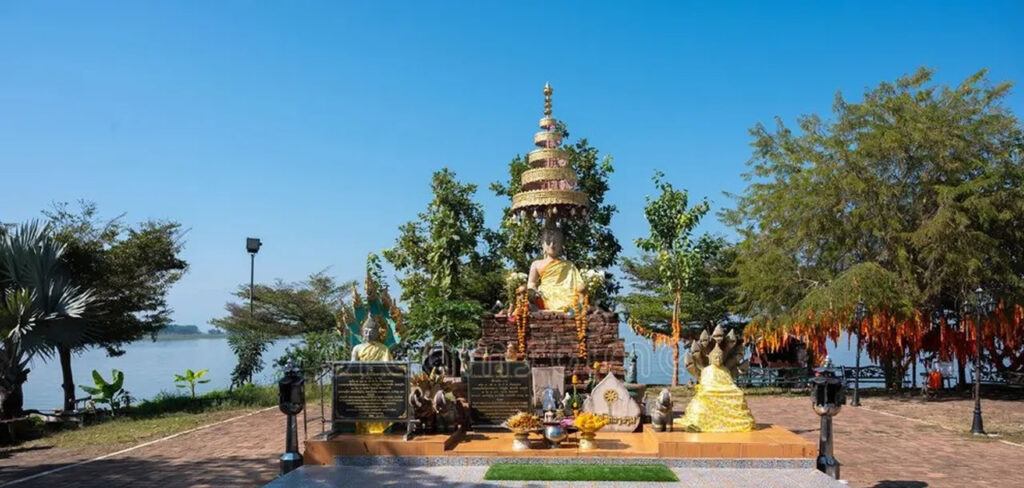
The lakefront promenade is the heart of Phayao. Locals gather here at sunset to stroll, snack, and unwind. Traditional longtail boats rest on the water, while cafés and noodle shops line the lakeside, offering scenic views without the crowds. In the distance, you’ll spot a small island temple and the backdrop of rolling hills.
Don’t miss Wat Si Khom Kham with its massive Buddha statue, or the weekend walking street where you’ll find local crafts and street food. Phayao is perfect for travelers who want to experience northern Thai culture without the tourist trappings—authentic, friendly, and peacefully beautiful.
Loei – Misty Mountains and Quiet Charm
Tucked away in Thailand’s far northeast, Loei is one of the country’s most underrated gems. Known for its cool climate, mist-covered mountains, and down-to-earth vibe, it’s a breath of fresh air for travelers seeking something beyond the usual tourist trail.

Loei’s biggest draw is Phu Kradueng National Park, a favorite among Thai hikers for its pine forests, waterfalls, and sweeping plateau views. Nearby, the town of Chiang Khan sits peacefully along the Mekong River, offering charming wooden guesthouses, vintage cafés, and a relaxed walking street that lights up in the evening.
The region also celebrates unique cultural traditions like the colorful Phi Ta Khon ghost festival in nearby Dan Sai. With few international visitors, Loei keeps its identity firmly rooted in Isaan culture—welcoming, humble, and refreshingly off the map.
Sangkhlaburi – Borderland Serenity and Cultural Crossroads
Tucked deep in the western mountains near the Myanmar border, Sangkhlaburi feels worlds away from Thailand’s tourist hubs. This peaceful riverside town, centered around the shimmering Vajiralongkorn Lake, is best known for its iconic wooden Mon Bridge—the longest of its kind in Thailand—and the harmonious blend of Thai, Mon, and Burmese cultures.
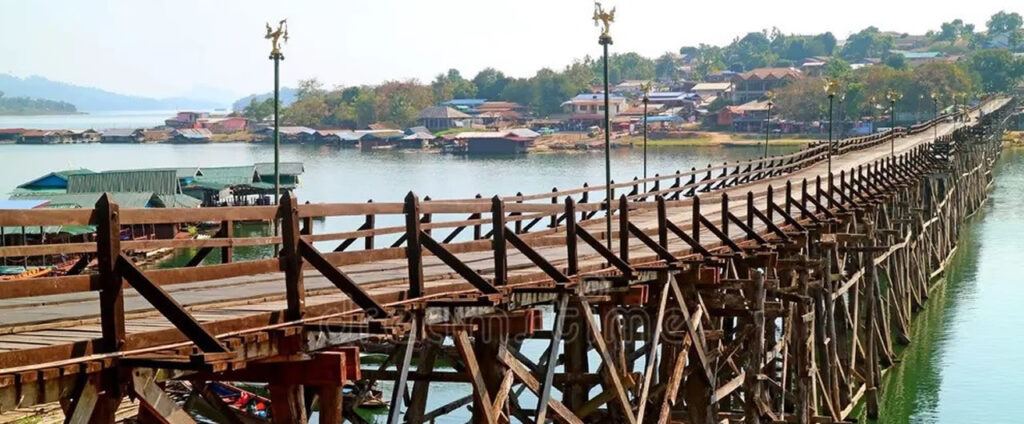
Early mornings are magical here, with mist rolling off the lake and novice monks collecting alms along the bridge. Visit the sunken Wat Saam Prasob, a partially submerged temple that tells a story of the past, or take a boat ride to remote Mon villages that dot the shoreline.
Despite its remoteness, Sangkhlaburi welcomes you with warm hospitality and quiet charm. It’s a place to slow down, take in mountain views, and experience a unique side of Thai culture few travelers ever reach.
Khanom – Quiet Beaches and Pink Dolphin Waters
If you’re looking to escape the crowds but still want soft sand and turquoise seas, Khanom might be your perfect hideaway. Located in Nakhon Si Thammarat on the Gulf coast, this laid-back beach town has long flown under the radar—offering peaceful stretches of sand, jungle-covered hills, and a strong local feel.

What sets Khanom apart? For starters, it’s one of the few places in Thailand where you can spot rare pink dolphins just offshore. Boat tours offer the chance to see them up close while exploring nearby islands and caves. Back on land, relax at Ao Thong Yi or Nai Phlao Beach, enjoy fresh seafood by the water, or take a scooter up winding roads to find hidden viewpoints.
Khanom feels untouched, but not isolated. It’s an ideal stop for travelers seeking nature, culture, and beach time—without the buzz of tourist-heavy islands.
Adventure & Outdoor Highlights
Thrilling landscapes for hiking, climbing, diving, and discovering Thailand’s wild side
Thailand’s not just about serene temples and lazy beach days. If you’re after adventure—whether that means carving through mountain roads, scaling limestone cliffs, or watching the sunrise from a misty mountaintop—you’re in the right place.
This section features destinations that bring a bit of thrill, a dose of nature, and plenty of reasons to step off the beaten track. Whether you’re ziplining through jungle canopies in Chiang Mai, tackling the curves of the Mae Hong Son Loop, or kayaking through sea caves in Phang Nga Bay, each of these spots adds an unforgettable edge to your Thailand journey.
Chiang Mai – Gateway to Northern Adventures
Chiang Mai isn’t just a cultural capital—it’s also one of Thailand’s top spots for outdoor fun. Surrounded by forested mountains, waterfalls, and winding rivers, this northern hub makes it easy to jump from temples and night markets into heart-pumping activities like white-water rafting, ziplining, mountain biking, and jungle trekking.
One of the standout adventures here is white-water rafting on the Mae Taeng River. Located about 90 minutes north of the city, this river cuts through rugged jungle terrain and offers exciting Class III–IV rapids during the rainy season (June to October). It’s an ideal blend of adrenaline and scenery—navigating boulders and drops with experienced guides while soaking in views of bamboo forests, remote hill tribe villages, and wildlife like monkeys and tropical birds. Most tours include safety gear, instruction, and a post-paddle Thai lunch at the river camp, making it accessible even for beginners.
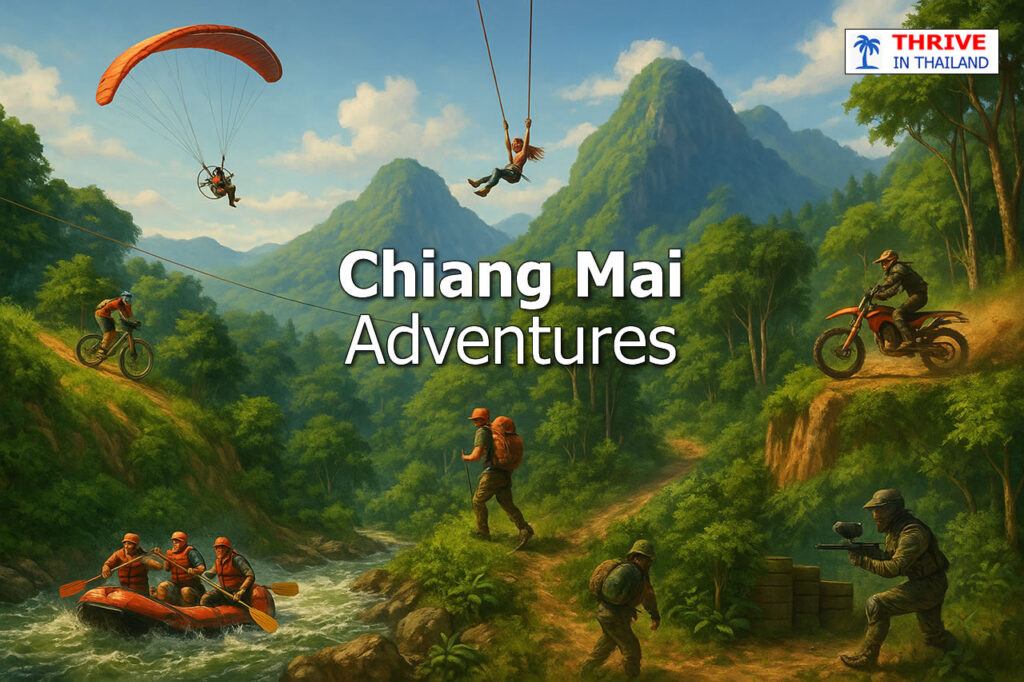
Chiang Mai is also a paradise for enduro motorbiking. The surrounding region offers hundreds of kilometers of off-road trails, winding through jungles, river crossings, steep mountain passes, and remote villages. Riders can join guided tours that cater to all skill levels, from half-day intro rides to multi-day adventures deep into northern Thailand’s wild terrain. Whether you’re kicking up dirt in Doi Suthep’s foothills or crossing creeks near Chiang Dao, it’s a thrilling way to explore areas tourists rarely see.
For a completely different perspective, paramotor flying over Chiang Mai’s countryside delivers a breathtaking bird’s-eye view of rice fields, rolling hills, and morning mist drifting across the Ping River Valley. Flights typically take off just after sunrise or before sunset, giving you golden-hour views of northern Thailand’s natural beauty—an unforgettable mix of serenity and exhilaration for adventure seekers.
And for even more thrills, just outside Mae Rim, you’ll find adventure parks and operators offering everything from bungee jumping and ATV jungle tours to paintball, ziplines, and giant swing rides—all set against a backdrop of scenic mountain foothills.
Yet the beauty of Chiang Mai is how seamlessly the adrenaline blends with tradition. One morning you’re rafting through rapids or tearing through a jungle trail on a dirt bike, and by evening you’re sipping Khao Soi in the Old City. For travelers craving both cultural depth and outdoor exploration, Chiang Mai is hard to beat.
Mae Hong Son Loop – Thailand’s Ultimate Road Adventure
A dream come true for motorbike riders and road trip lovers, the Mae Hong Son Loop is one of Thailand’s most scenic and winding routes. Starting and ending in Chiang Mai, this 600+ km loop takes you through misty mountains, ethnic villages, waterfalls, and some of the most untouched countryside in the country.
With over 1,800 curves—yes, really—it’s a journey made for those who love the road as much as the destination. Riders usually follow a path through Pai, Soppong, Mae Hong Son town, and Mae Sariang, stopping at hot springs, caves, and hill tribe communities along the way.
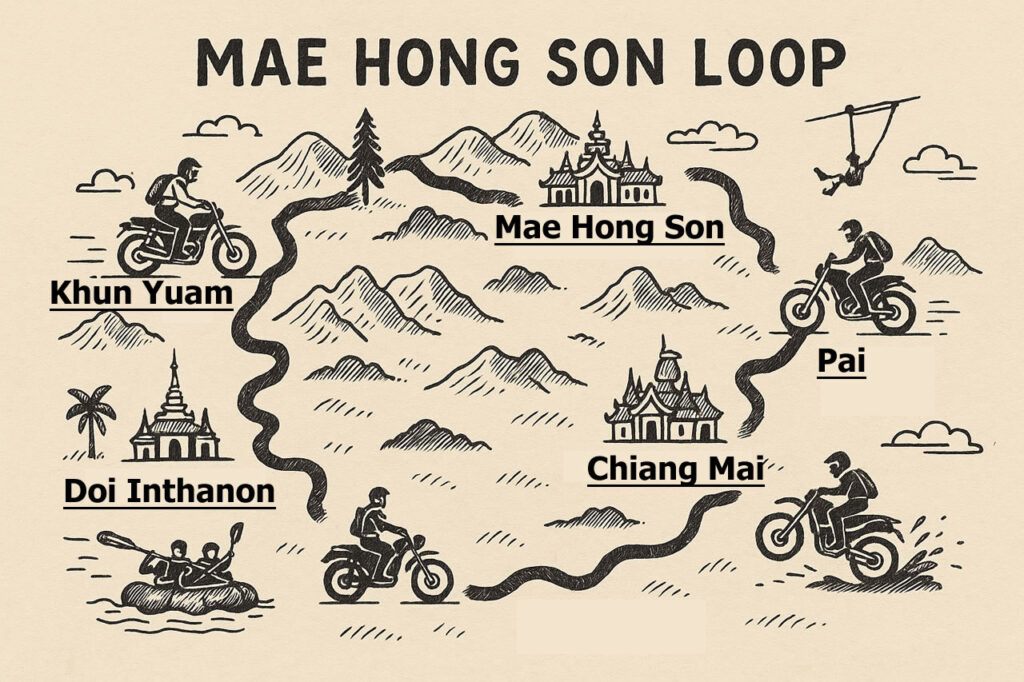
What makes this route so unique is its blend of adventure and culture. You’re not just cruising past gorgeous landscapes—you’re diving deep into northern Thai life. Spend a night in a rustic homestay, visit a long-neck Karen village, or soak in the natural Tha Pai Hot Springs after a day on the road.
The loop is popular among both Thai and foreign motorcyclists, but it still retains a rugged charm, especially in the quieter southern stretches. Whether done on a rented scooter or a proper touring bike, the Mae Hong Son Loop is more than a road trip—it’s an unforgettable Northern Thailand rite of passage.
Phu Chi Fa – Sunrise Above the Clouds
Tucked away in the far northeastern corner of Chiang Rai province near the Laos border, Phu Chi Fa offers one of Thailand’s most magical natural experiences—a mountaintop sunrise above a sea of clouds.
At just under 1,500 meters elevation, Phu Chi Fa isn’t the tallest peak in Thailand, but its unique vantage point looking out over the Mekong River valley and into Laos makes it unforgettable. Visitors hike up in the early morning darkness—flashlight in hand—to catch the moment when the first golden rays illuminate the mist-covered valley below. On a clear day, the view is nothing short of breathtaking.
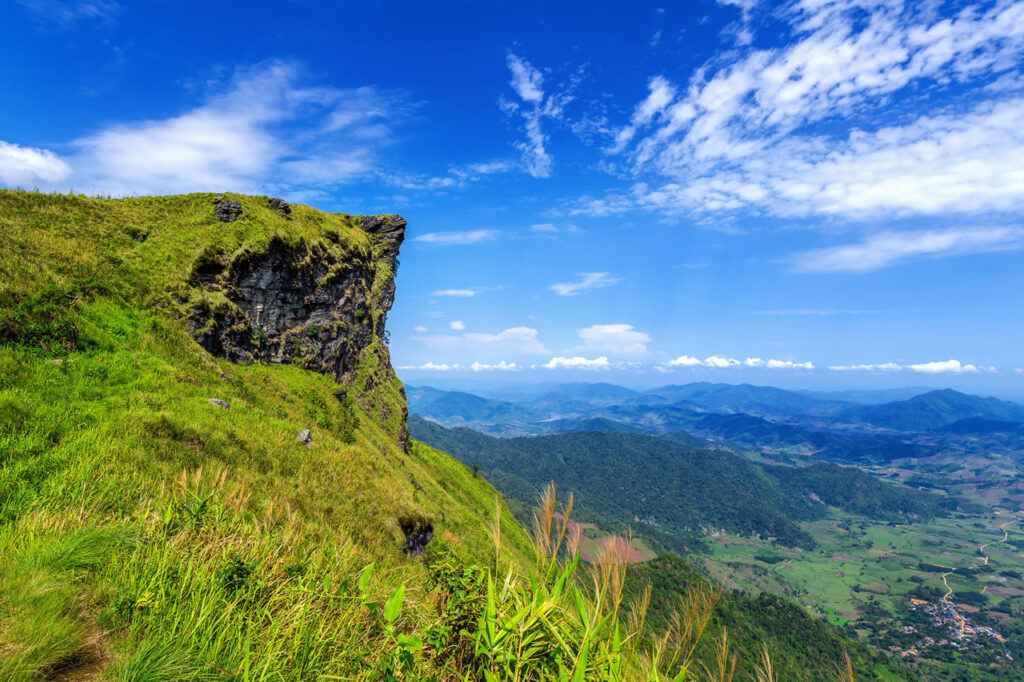
Despite its growing popularity, Phu Chi Fa retains a peaceful, almost mystical vibe. The surrounding villages, home to Hmong and other hill tribes, add a cultural richness to the area. You’ll find simple guesthouses and warm local hospitality in the nearby hamlets, often paired with chilly air and steaming bowls of local noodles.
It’s best visited between November and February, when the mist is thick and mornings are crisp. While not as well-known among mainstream tourists, Phu Chi Fa is a favorite among Thai travelers and photographers. If you’re chasing a sunrise moment to remember—this is it.
📌 Ready to see it for yourself? Check out my full Phu Chi Fa Guide with transport tips, sunrise timing, where to stay, and everything you need for the early-morning hike.
Krabi (Railay & Tonsai) – Cliffs, Caves, and Coastline Thrills
Krabi’s Railay and Tonsai beaches are a paradise for adventurers—rugged limestone cliffs, hidden lagoons, and turquoise seas all packed into a compact, stunningly scenic peninsula that’s only accessible by boat.
Railay Beach is famous for its towering cliffs that draw climbers from around the world. Whether you’re a first-timer or a seasoned crag rat, there are climbing schools and bolted routes galore. Tonsai, right next door, is a bit more laid-back and backpacker-friendly, with a bohemian vibe and harder climbing routes that attract serious enthusiasts.

But it’s not all about vertical thrills. You can kayak through mangroves, snorkel around nearby islands, or explore Phra Nang Cave Beach, home to a sacred fertility shrine and surreal sea caves. At low tide, you can even walk across to tiny islands. The sunsets here are equally spectacular—best enjoyed from a beachfront hammock with a cold drink in hand.
Despite its popularity, Railay still retains a cozy, car-free charm. You’ll find everything from rustic bungalows to boutique resorts. Tonsai is a bit more rustic and undeveloped—perfect if you like things simple and social.
For climbers, outdoor lovers, and those wanting a visually striking coastal escape with plenty to do, Railay and Tonsai hit the sweet spot.
📌 Ready to explore Krabi’s cliffs and stunning beaches? Check out my complete Krabi Travel Guide covering boat access, the best beaches, climbing spots, sunset views, and everything you need for an unforgettable trip.
Phang Nga Bay – Limestone Marvels by Kayak
If other places in Thailand are pretty, Phang Nga Bay is downright surreal. Picture an emerald-green bay scattered with dramatic limestone karsts, hidden sea caves, and secluded lagoons—all best explored by boat or sea kayak.
The bay is most famous for James Bond Island (Khao Phing Kan), featured in The Man with the Golden Gun, but there’s much more beyond that iconic spire. Paddling through the tidal hongs (collapsed cave systems) at places like Koh Panak and Koh Hong feels like entering another world—especially at sunrise or sunset when the water turns gold and the cliffs glow.
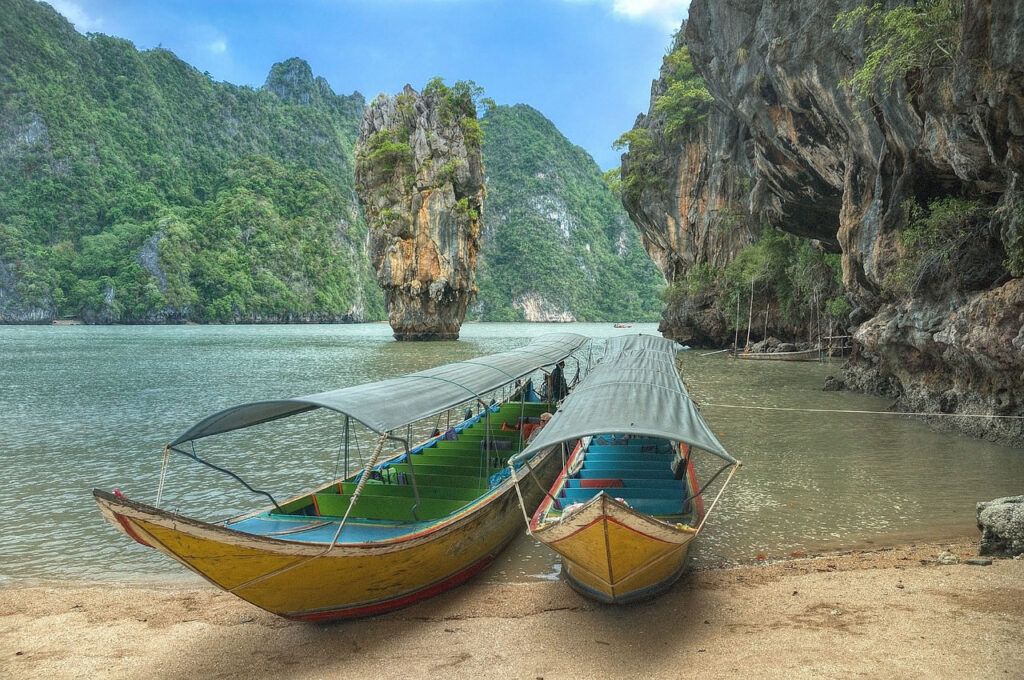
Tours typically depart from Phuket or Krabi and cater to all levels of adventure. Many include guided kayaking, cave exploration, beach stops, and even floating seafood lunches at local fishing villages like Koh Panyee, which sits on stilts above the water.
Despite its fame, Phang Nga Bay has plenty of quiet corners. Go early or choose smaller operators for a more peaceful experience. And bring a waterproof bag—you’ll want your camera for this one.
This is a must for travelers drawn to natural beauty, gentle adventure, and unique photo ops—a dreamscape you glide through rather than hike or climb.
Koh Phi Phi – Cliffs, Coves & Classic Island Thrills
Koh Phi Phi is the poster child of Thai island adventure—and it lives up to the hype. Towering limestone cliffs plunge into turquoise waters, and hidden lagoons, snorkeling reefs, and cliffside viewpoints are all packed into a compact group of islands that feel like nature’s amusement park.
The main island, Koh Phi Phi Don, is where all the action happens—beaches by day, beach bars by night. From there, you can hop on a boat to Maya Bay (made famous by The Beach), snorkel around Shark Point or Bamboo Island, or try cliff jumping for a real adrenaline kick. Scuba diving is also popular, with vibrant coral and plenty of marine life.

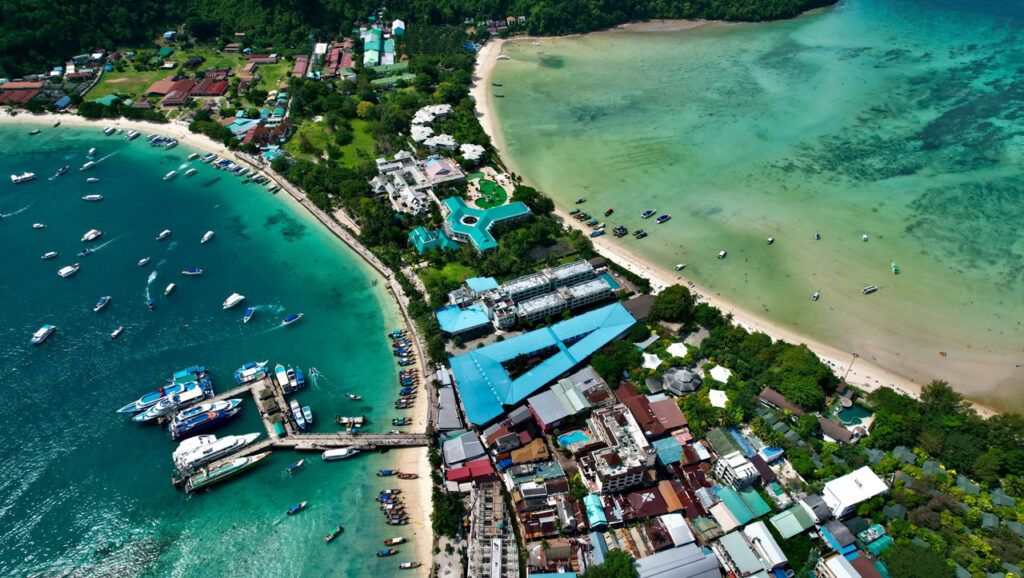
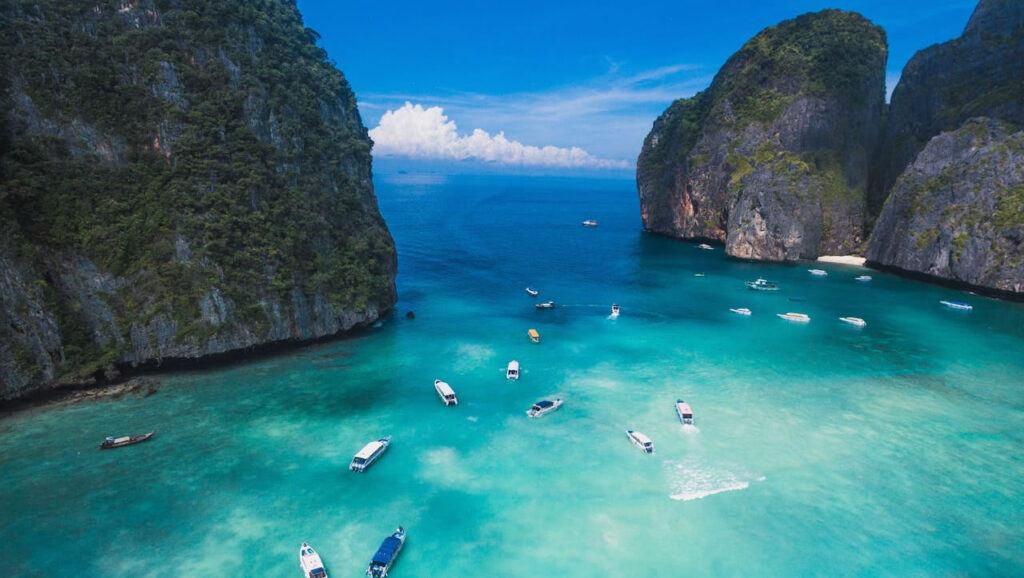
For hikers, the Phi Phi Viewpoint trail rewards you with panoramic shots of the iconic twin bays—perfect at sunrise. If you want something quieter, consider staying on the far side of the island or visiting in shoulder season when the pace slows and prices drop.
Yes, it’s touristy. Yes, it can be crowded. But Koh Phi Phi delivers big thrills in a small, stunning package—and for many, it’s an essential Thai island stop.
Frequently Asked Questions about Visiting Thailand
Planning a trip to Thailand comes with plenty of questions—especially with so many amazing places to choose from. Below are answers to some of the most common queries travelers have when mapping out their Thai adventure.
When is the best time to visit Thailand?
The ideal time is between November and February, when the weather is cooler and drier. But it depends on where you go—the Andaman Coast (Phuket, Krabi) is best from November to April, while the Gulf Coast (Koh Samui, Koh Phangan) tends to be drier from January to August.
I’ve only got two weeks. Which regions should I focus on?
For a balanced first trip, many travelers combine Bangkok + Chiang Mai + one or two islands. If you prefer culture and nature over beaches, consider swapping the islands for Pai, Sukhothai, or a national park.
What’s the best way to get around the country?
Thailand’s transport network is solid. Budget airlines (like AirAsia or Nok Air) are perfect for long-distance travel, while buses, trains, and minivans connect most towns. For island hopping, use ferries or speedboats—but always check seasonal schedules.
Is it safe to travel to less touristy places?
Yes—Thailand is generally very safe. Even in off-the-beaten-path areas, you’ll find welcoming locals and basic amenities. Just make sure to check for updated travel info in the rainy season, especially for remote areas.
Do I need to book accommodation in advance?
In high season (Nov–Feb), yes—especially in popular areas. But during shoulder season or for lesser-known towns, you’ll usually find rooms on arrival. Booking online lets you compare options and read reviews, but it’s not always essential.
How much time should I spend in each place?
It depends on your pace, but here’s a general rule of thumb:
- Big cities (Bangkok, Chiang Mai) – 3 to 5 days
- Islands – 3 to 6 days depending on size and travel time
- Cultural or natural escapes (Sukhothai, Khao Yai, Pai) – 2 to 4 days
Many travelers underestimate travel time between regions, so avoid packing in too much.
What’s the visa situation for Thailand in 2025?
Most tourists from 50+ countries (e.g., US, UK, EU, Australia) can enter visa-free for 30 or 60 days. Extensions are possible. Digital nomads, retirees, and long-stay visitors should check Thailand’s long-term visa options.
Is Thailand suitable for families with kids?
Yes! Thailand is very family-friendly, especially in places like Chiang Mai, Hua Hin, and the islands. Many hotels offer family rooms, and attractions like elephant sanctuaries, waterfalls, and temples are enjoyable for all ages. Bangkok also has excellent parks, aquariums, and interactive museums.
Can I use my credit card everywhere?
You’ll need cash for street markets, rural towns, and transport, but most hotels, shopping malls, and restaurants in tourist areas accept Visa and Mastercard. Always carry a few thousand baht in cash, just in case.
What about internet and mobile data?
Thailand has fast and reliable internet, even in rural areas. You can get a local SIM card with unlimited data for as little as ฿200–฿500. AIS, DTAC, and TrueMove are the top providers. For digital nomads, co-working spaces are plentiful in cities like Chiang Mai and Bangkok.
✅ Best Places to Live in Thailand – Discover which cities and regions suit your lifestyle, budget, and vibe.
✅ Long-Term Visa Options for Thailand – Visa choices for retirees, remote workers, and more.
Further Reading
Planning a trip to Thailand? Here are some must-reads to help you get the most out of your journey:
- Thailand Tourist Visa Requirements
Know exactly what you need before booking your flight
- Thailand Visa Run
How to extend your stay—legally and smoothly
- Prescription Medication in Thailand
What’s available, what to bring, and how to refill it here
- Important Thai Phrases Every Traveler Should Know
A fun and useful crash course in Thai for your trip
- Cultural Do’s and Don’ts in Thailand
Understand Thai norms so you don’t step on any toes
My first trip to Thailand (1990)
I first became aware of Thailand as a holiday destination in the late 80s after listening to the many stories told by friends who returned from the Land of Smiles. Full of praise for what an amazing place it is, they used to call it “Disneyland for Adults.”
At that point I had never even been outside of Europe, but my curiosity was sparked, and I needed to see with my own eyes what all the fuss was about. Together with a friend, we booked flight-only to Bangkok, where another friend who was already in Thailand picked us up at Don Muang International Airport.
He took us to our humble quarters at “Windy Guesthouse,” which was a run-down high-rise tucked away in an alley off Sukhumvit somewhere. To get to Sukhumvit, you had to take a motorbike taxi, which was 3 Baht at the daytime and 5 Baht at night.
Our friend had to leave the next morning, going back to Germany. He sat us down, and over a few Singha beers, he gave us a crash course in Thai wisdom. That night we learned to count in Thai from 1 to 10, where to go, how much to pay, how to get there, and what absolutely not to do. We wrote everything down on an A4 paper as we didn’t have a clue what to expect on our journey.
Arriving in Bangkok for the first few days was like sensory overload—a total culture shock, but in a good way! Everything was new and interesting, and I was fascinated by how easy it is to navigate this bustling metropolis.
We were bound for Koh Samui, and our friend’s instructions told us how to get there, where to stay, how to hiring bikes and what it should cost. We took the train to Surathani and the ferry to Koh Samui, which was exhausting after several nights out in Bangkok, but we were excited to start our beach vacation.
Arriving at Nathon Pier, we jumped onto a Songthaew (shared taxi), which took us to our resort in Lamai Beach, where our friend recommended we stay. The owner greeted us like we were old friends, and within 30 Minutes we checked in to our bungalows, snacked on a Nam Tok Nuea (spicy beef salad), and enjoyed a cold beer on the beachfront restaurant terrace while our rental bikes came around the corner. I was convinced I’d arrived in paradise!

I’ve never been in a tropical country before and was blown away by the natural beauty of the island, the kindness of the locals, and the delicious food. I had the best time of my life, and very quickly it felt like actually living there and not like a holiday. That was when I got hooked on Thailand!
This was back in 1990, and surely a lot has changed over the decades, but Thailand has kept its charm and still is one of the best countries to visit for an unforgettable experience.
Still So Much to Explore
Out of the 35 listed destinations, I have visited 20 so far and many others not on the list. I don’t do much traveling inside Thailand (or any travels for that matter) anymore, but when compiling those destinations, I actually got bitten by the travel bug again. Thailand has plenty to offer, and there is still so much to see!
I want to check out islands like Koh Lipe and Koh Kradan, watch the Moto-GP in Buriram, and visit the historical sites of Ayutthaya and Sukhothai.
Cheers to new adventures! Till then, keep exploring and maybe I’ll bump into you somewhere out there…
📌 Found this content helpful?
If this helped you plan your trip, a coffee is a small thank-you that keeps these travel resources accurate and ad-free.

Founder of Thrive in Thailand
Long-term expat living in Thailand—sharing culture, insights, and real-life farang wisdom, one story at a time!
📌 Got a question or want to share your favorite spot in Thailand? Drop a comment below—I’d love to hear from you and help however I can.
